

Why tourism in Venice is doing more harm than good and what we can do about it
The current state of tourism is hurting venice.
The ever-increasing offering of low-cost travel transportation, housing, and planning has helped the tourism industry to boom in the past decades.
The year 2019 alone counted over 1.5 billion international arrivals.
However, most major stakeholders of the tourism industry focus on profit, not on sustainability.
Today, tourism hotspots are affected by mass tourism – when visitors arrive in masses of tens of thousands of people – and the industry in the most popular destination has turned into a problem, rather than a resource. Venice is one of them, and it is suffering a lot.

Venice residents dropped from 175.000 in 1951 to 50.000 in 2022. Why?
Data shows that the population in Venice has been constantly decreasing for several decades.
Several factors can explain why this is happening:
- An increased cost of living
- Higher cost of housing
- A decrease in quality of life (traditional shops replaced by low-quality souvenir shops, constant, for example)
- Lack of spaces for the youth
- Lack of rewarding job opportunities
All of the above can be linked directly to the impact caused by the dramatic increase in mass tourism in Venice.
Indeed, some local entrepreneurs and several foreign investors exploit this situation to target tourists and generate great profits. Meanwhile, authentic activities and shops have and are being strangled by: ever-increasing rents, a constantly decreasing market size of the local population, and the competition of tourist traps seducing tourists with their cheap mass-produced products or frozen food.
Want more tips, tools and stories from Venice, Italy?
We're on a mission to make it easy and fun to discover and support the authentic Venice. Try our email and see for yourself!
Thanks for signing up! If there is no e-mail in your inbox in the next hour, remember to check your spam folder and to add us to your contact list. Thank you! Get access to our live videos and even more content: like us on Facebook to add daily goodness to your feed. A presto!
Oops! We're sorry, something went wrong. We'll fix it soon. In the mean time, you can like us on Facebook to stay in touch!
By signing up you agree with Venezia Autentica's privacy policy
Venice is a beautiful and unique city that must and can only be preserved by locals, who are the only people with the knowledge (and love) necessary to do so.
This is why one of the biggest threats to the survival of Venice is the disappearance of its citizens.
Without citizens, Venice loses the mastery and the know-how that keeps and kept Venice alive for thousands of years.
Alas, however, younger generations are forced to move out of the historical centre because they can not find rewarding jobs and unaffordable housing, having to give up on their dream of living in their city.
Currenlty, the Venice I.V. (“indice di vecchiaia” or “age index”, which represents the ratio between people over 64 and children under 15) is well above 2,80.
In other words, there are almost 3 people over 64 for every child under 15.
This, coupled with a 35% decrease in the population aged 20 to 34 between 2001 and 2011 (just 10 years!), does not leave much hope for the city.
To give Venice a chance of survival, strong measures must be taken to repopulate the city.

The above trend represents the number of locals and the number of tourists in Venice since 1950.
One of the reasons behind the constant increase of tourism arrivals is the decrease of international transportation.
Since 2015, Venice counts up to 30 million stays every year. And that in a city of fewer than 8 km 2 (or 3 square miles)!
This increase, however, has also been coupled with a decrease in the average length of the stat of tourists and a shift of touristic behaviour that is harming deeply Venetian inhabitants and local businesses.

These changes in tourism and the daily saturation of tourists within the city has led to an invasion of mass-produced souvenir shops and tourist traps, that are putting many local enterprises and artisans’ shops out of business by causing an increase in the cost of living and renting.
The consequences of this are a decrease in life quality and opportunities for the locals, as well as a worsened experience for responsible and caring visitors.
Related: You don’t want to be that tourist, watch out for these common tourist traps in Venice
Why are we speaking of a decrease in quality of life for the inhabitants as well as a decrease in quality of the stay for visitors?
Until the early 2000s, most visitors would come and stay in Venetian hotels for a few nights, taking a few days for exploring the city as a whole, visiting Venice beyond the landmarks, discovering the local life and culture.
In recent years, along with a yearly staggering increase in the number of the visitors, the way of visiting the city has changed: many tourists now come to Venice as a day/hour trip, as part of a cruise, for example, dramatically modifying social, logistic, economic and touristic aspects of the city.
Related: Good or bad? The truth about cruise ships in Venice
A vivid effect of this shift towards day-trips is that the only walkways used by dozens/hundred of thousands are the main streets connecting Piazzale Roma and the Train Station (the arrivals area) with the Rialto Bridge and Saint Mark’s square.
For 11 months a year, Venice assists to an almost daily gigantic human wave arriving in the city and trying to quickly move to and back from the two most known Venetian landmarks, resulting in a total jam.
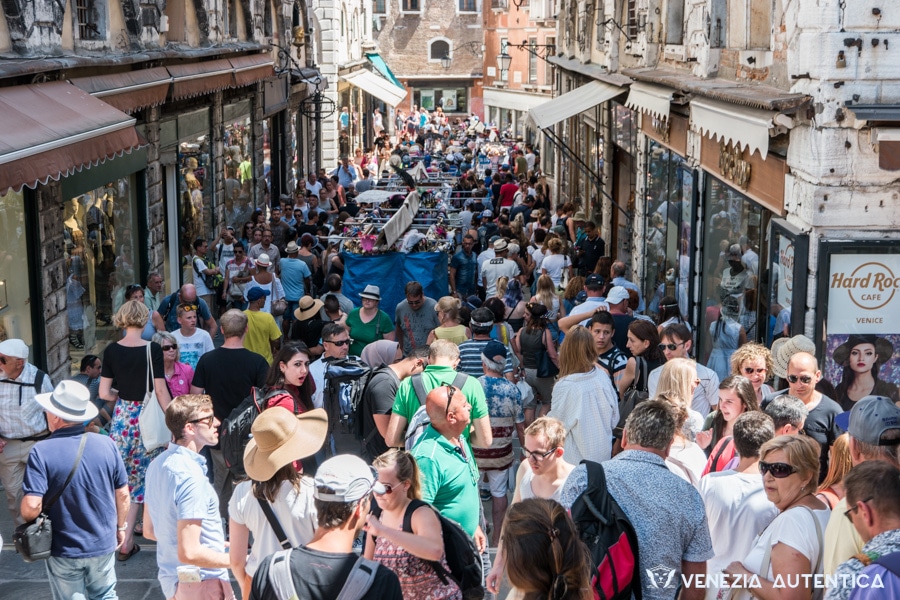
To make things worse, Venice cannot provide picnic or resting areas because of its small size and its morphology, resulting in visitors sitting down for resting and eating on bridges, narrow alleys, house doors and shop windows blocking even further the already jammed city.
Even though they are not perceived as such, alleys and bridges in Venice are the equivalent to streets and crossroads in other cities. Blocking them is a guarantee for Venetians to get angry at you.
Related: You asked, We answered: 19 things you might not know about Venice, Italy
Another effect of this approach to visiting the city is the impossibility for day-trippers themselves to take the time to appreciate the city and to understand what is genuine and worth their money, and what is absolutely not.
Foreign investors and investment funds have decided to take advantage of this situation by purchasing shops on the busiest paths to display their cheap/very cheap merchandise, luring in the passing tourists and selling mass-produced plastic goods which, at best, are of no value. At worst, they have been found to be toxic.
One more problem is that Italy has a high unemployment rate but no minimum wage, and these businesses, in particular, exploit the situation even further: employees struggle to live even in Mestre (which has much lower rents), while the company they work for is destroying local and family businesses and artisans’ shops.

Unlock a discount at the best local businesses in Venice
The investment race for selling 99cents souvenirs has led to a spike in the price of shops and rents that forced many genuine local activities, which were not aiming at masses, to try and move to less visited and therefore less expensive areas.
Because of the day-trip approach and the ever-decreasing local population, however, those less-visited areas struggle to have enough customers, leading an ever-increasing number of local activities to close and never to open again.
Related: Interactive Local Map Of Venice, Italy
This lack of opportunities and the negative outlook for young Venetians is leading more and more people to leave the city, well knowing that they will never be able to come back unless the current situation changes.
Are the negative effects of mass tourism in Venice really that bad?
The situation we just described could seem to be a bit too gloomy to you, maybe a result of a pessimistic approach.
The considerations we made, however, are perfectly in line with UNESCO’s last report about the current situation of “Venice and its Lagoon”, which lead the institution to consider putting Venice on the UNESCO World Heritage in Danger list in 2017.
Related: Venice to be or not to be a UNESCO World heritage site, that is the question
Is there any chance for Venice?
We are convinced there is still hope for Venice, of course!
Our strong determination and optimism make us believe it is possible to change this very negative trend and to improve the life of the Venetians, the health of the city, and the quality of the stay of the visitors… but we don’t trust the authorities for making this change happen.
We believe that Venice can prosper again, but only thanks to the people like you and us.
We believe that YOU can make a difference! Travel Responsively, please.

Book an authentic experience in Venice
Here's how you can start making a positive impact in venice.
- Unlock your discount at our partner selected authentic local shops, bars & restaurants. You’ll help us build a better future for Venice and the Venetians
- Book an authentic experience or walk with a local
- Eat, Shop, Drink local: Visit and Support our certified local businesses
- Experience Venice like a Venetian: See our interactive map of Venice and our tips
- Hire Venetians to help you with your needs and services in Venice
Make sure to check out the resources below to make the best out of your stay in Venice, while making a positive impact on the local community.
We count on you!
YOU CAN SUPPORT VENICE AND THE VENETIANS BY TRAVELING RESPONSIBLY
I'm visiting Venice. Why should I follow your recommendations?
The way you visit Venice has an impact both on the quality of your experience and on Venice itself. Chilling, exploring , shopping , eating and drinking where the locals do, can make a huge impact both on the memories you bring home and on the local economy and community.
POPULAR POSTS LIKE THIS
- Best Places where to eat and drink like a local in Venice
- Interactive map of the best authentic local businesses and places where to eat & drink in Venice
- Why eating and drinking at authentic local businesses matters
Liked this article? Don’t forget to share the love!
Home >> Visiting Venice >> Tips and Inspiration >> You’re Here
Tips and Inspiration to experience Venice
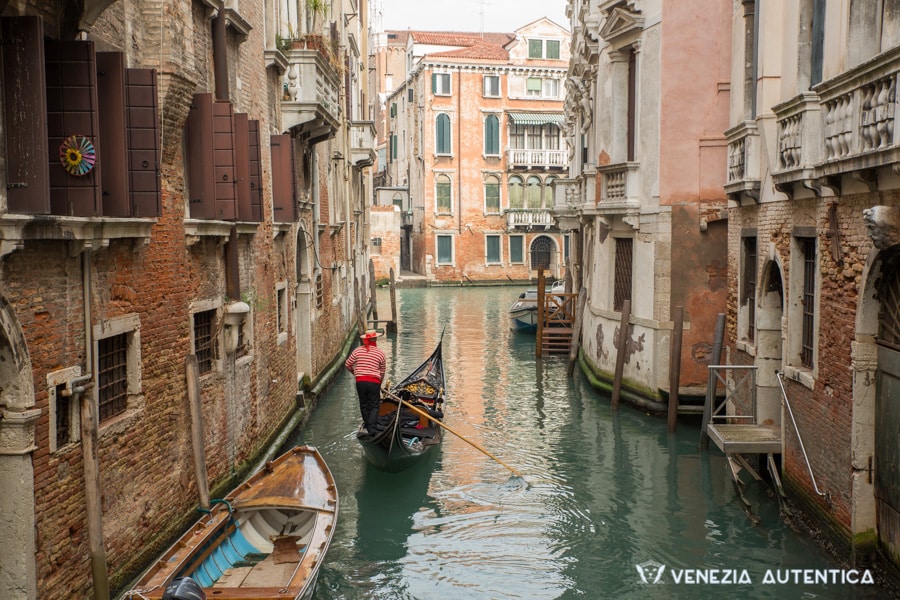
Want to go on a gondola ride in Venice? Here’s everything you need to know!
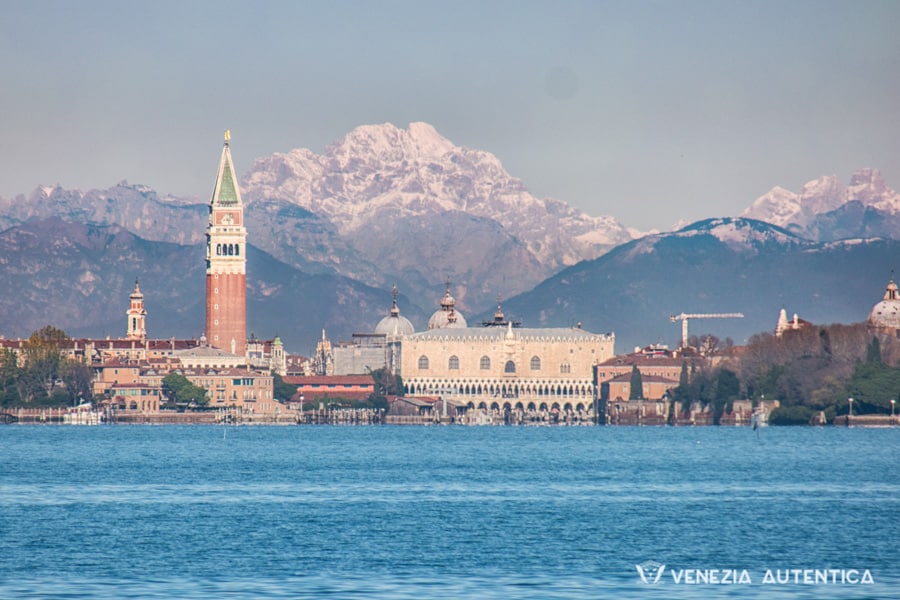
How’s the weather in Venice, Italy? We’ve got you covered!
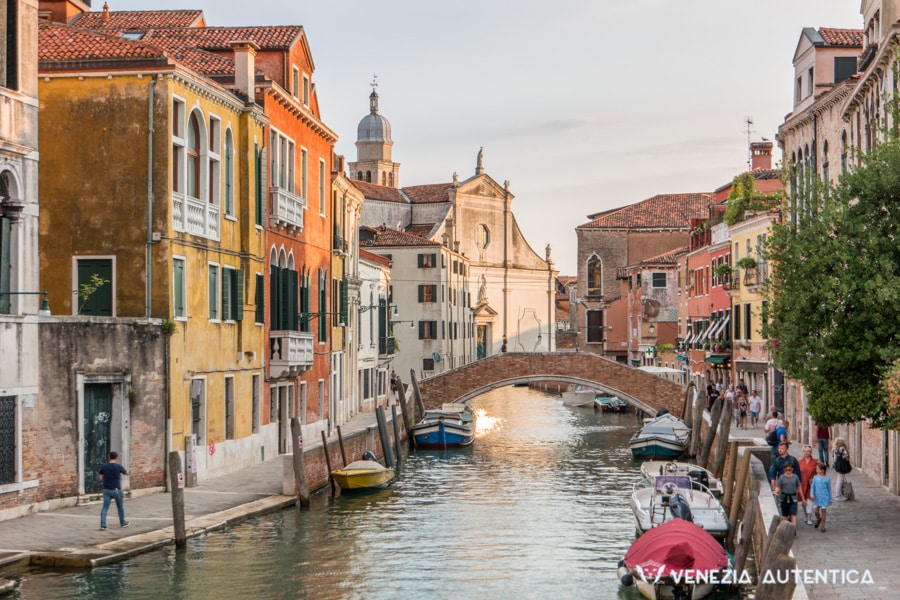
The ultimate guide to the top 10 things to do and see in Venice, Italy
More in Visiting Venice
Go to Visiting Venice >>
- February 12, 2022
You might also like
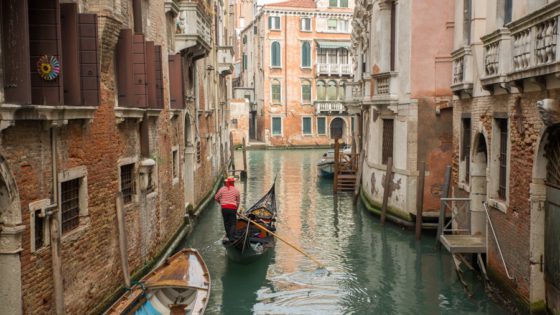
Want to go on a gondola ride in Venice? Here’s everything you need to know!
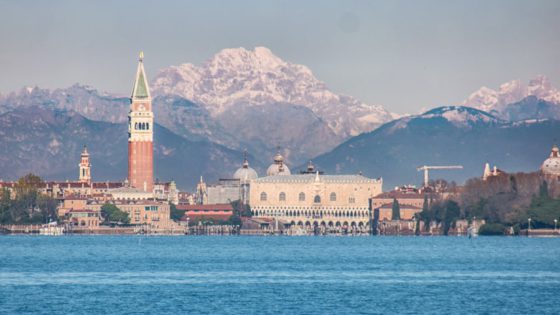
How’s the weather in Venice, Italy? We’ve got you covered!
![environmental impact of tourism on venice From a local event to an international rowing appointment in Venice, Italy: La Vogalonga [VIDEO+PHOTO] - Venezia Autentica | Discover and Support the Authentic Venice - In Venice, tourism is not sustainable. Discover the impact of the travel industry on Venice and how sustainable tourism can help saving the city](https://cdn1.veneziaautentica.com/wp-content/uploads/2016/05/0i5c0448-custom-560x315.jpg)
From a local event to an international rowing appointment in Venice, Italy: La Vogalonga [VIDEO+PHOTO]
- ONLY PRIVATE TOURS AND ACTIVITIES
We make it easy to experience Venice with local guides and experts
- 100% GUARANTEED LOCAL AND IMPACTFUL
Looking for things to do in Venice? Experience Venice with a local!
We’d love to chat.
Let us know
how we can help

Sustainable Tourism in Venice: Finding Harmony in the City of Canals
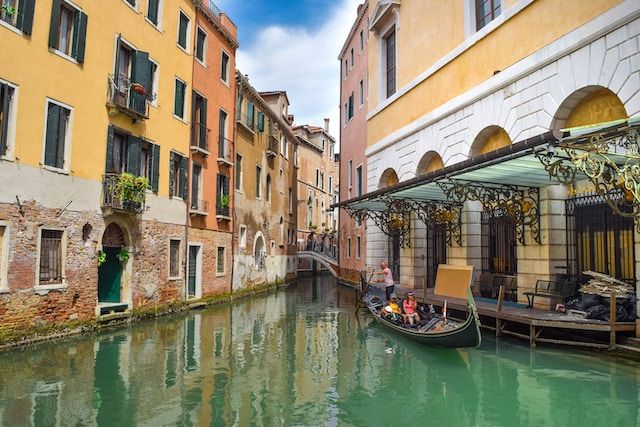
Venice has been attracting millions of visitors every year with its picturesque buildings, winding streets, and enchanting waterways. However, Venice is a fragile city and it is facing a critical challenge: how to preserve its beauty while promoting sustainable tourism .
In this article, we will explore the sustainable issues in Venice, what the municipality is doing to make the city sustainable, and how to visit Venice sustainably.
Sustainable tourism in Venice: let's begin with a definition
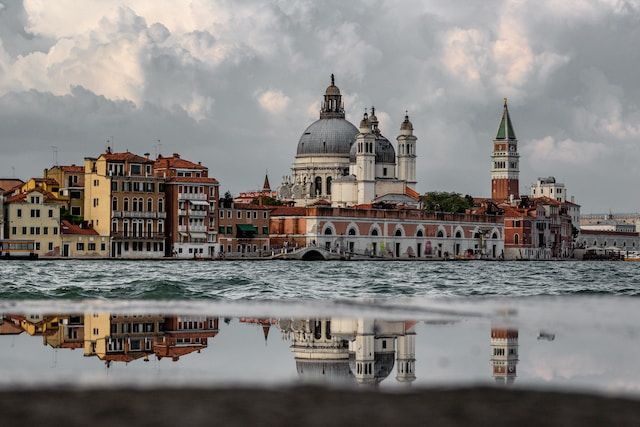
Sustainable tourism refers to a type of tourism that aims to minimize the negative impact of the tourism industry on the environment, local communities, and cultural heritage.
It focuses on preserving natural resources and ecosystems while providing economic benefits to the local community .
Sustainable tourism also aims to promote responsible behavior among tourists and encourage them to adopt sustainable practices.
Sustainable tourism involves several practices such as reducing carbon emissions, conserving natural resources, promoting cultural heritage, and supporting the local economy.
For example, sustainable tourism can involve using renewable energy sources, reducing waste and plastic use, and promoting responsible tourism practices such as respecting local cultures and customs.
The benefits are numerous. It promotes sustainable economic development and provides jobs and income for local communities while preserving the natural environment and cultural heritage. Sustainable tourism also helps to reduce the negative impact of tourism on the environment and ecosystems, which is crucial for the preservation of our planet.
In other words, it is a critical aspect of responsible travel that ensures the long-term sustainability of our planet and communities . By adopting sustainable tourism practices, we can preserve the beauty of our planet and contribute to the well-being of local communities.
Let's now focus on the sustainable tourism in Venice and discover what the city is actually doing to preserve its heritage.
Sustainable Issues in the city
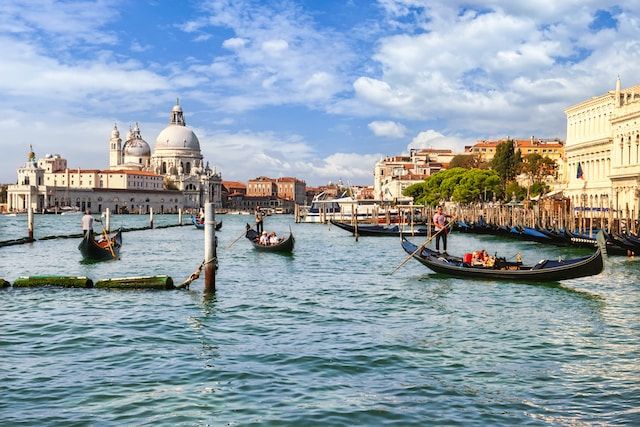
Venice faces several sustainable issues due to its unique location, fragile ecosystem, and the overwhelming number of visitors it receives.
One of the most pressing issues is the impact of mass tourism on the city's fragile infrastructure.
The city's waterways and canals are under constant pressure from the influx of visitors, who often use motorized boats, leading to increased pollution and erosion .
Another issue is the high level of waste generated by tourists, especially during the peak season. The excessive amount of plastic waste, littering, and overflowing trash bins create an eyesore for tourists and locals alike.
Could we say that Venice is a Sustainable City?
Venice, a truly tourism dependent city, is taking several steps to become a sustainable city.
In 2017, for example, the city implemented the "Venice 2030" project , which aims to reduce the environmental impact of tourism while promoting sustainable development.
The project includes measures such as reducing the number of cruise ships, regulating the use of motorboats, and promoting responsible tourism.
The municipality is also investing in renewable energy sources, promoting sustainable mobility, and preserving the city's cultural heritage.
We cannot forget to mention one of the most significant measures introduced in the last years: the ban on large cruise ships in the Venetian Lagoon. The Stop alle Grandi Navi campaign was in fact launched to protest against the negative impact of these ships on the fragile ecosystem and cultural heritage of Venice.
The municipality has also taken steps to regulate the use of motorboats and reduce the number of visitors in the city's historic center.
They are also trying to introduce a tourist ticket system , which would charge tourists for entry into the historical center, with the aim of monitoring daily tourist arrivals and raising funds for the preservation of cultural heritage sites.
These efforts demonstrate the city's commitment to preserving its unique beauty while promoting more sustainable tourism practices .
How to Visit the city Sustainably
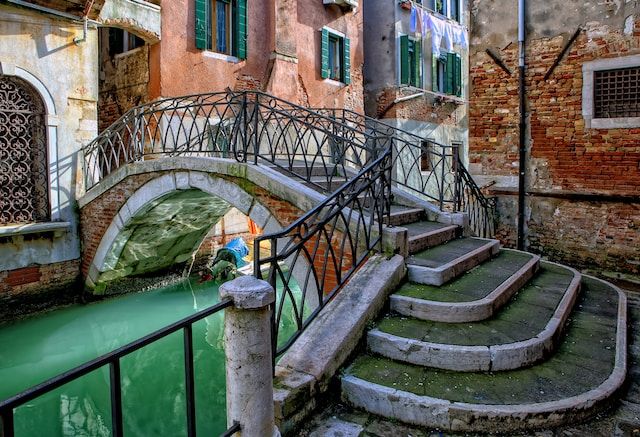
There are several ways to travel around this UNESCO World Heritage site sustainably .
One of the best ways is to use public transportation , such as water buses or the iconic gondolas.
Walking or cycling (where it is possible, like at Lido island) is also a great option to explore the city and its hidden gems.
Choosing eco-friendly accommodations and restaurants that use local and organic products is also an excellent way to support the local economy and reduce the carbon footprint of your visit.
It is also essential to be respectful of the city's cultural heritage and avoid damaging historic buildings or monuments.
Do you know the Detourism Campaign promoted by the municipality?
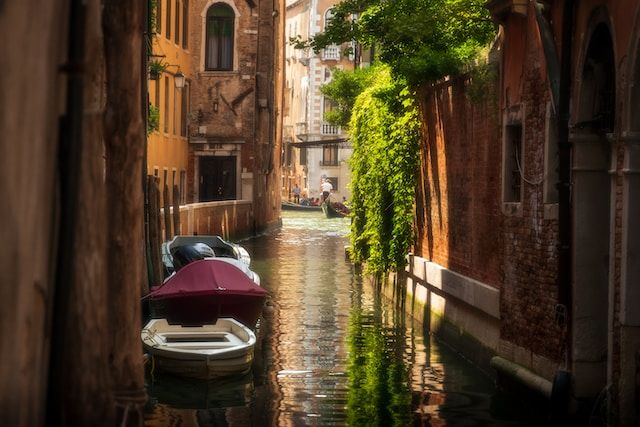
" Detourism " is a movement that encourages travelers to explore off-the-beaten-path destinations and promote sustainable and responsible tourism practices.
This campaign aims to reduce the negative impact of mass tourism on the environment, cultural heritage, and local communities by promoting alternative destinations and sustainable travel practices.
As you have read through the article, Venice has been facing challenges with over tourism for several years, which has led to negative impacts on the environment, cultural heritage, and local communities.
The Detourism Campaign offers an excellent opportunity to promote sustainable and responsible tourism practices in Venice and encourage travelers to discover lesser-known destinations in the region.
The campaign can help reduce the negative impact of mass tourism on the fragile ecosystem of the Venetian Lagoon and preserve the cultural heritage of the city. It encourages travelers to explore alternative destinations, such as the nearby islands, which offer a more authentic and less crowded experience of the region.
Supporting local businesses and choosing sustainable accommodations and tour operators can also help promote responsible tourism practices in Venice!
The campaign is also important because it raises awareness about the impact of mass tourism on the environment and local communities. It encourages travelers to be mindful of their actions and promote sustainable travel practices that benefit both the traveler and the destination.
Overall, the Detourism Campaign is a positive initiative that promotes sustainable tourism practices and encourages travelers to make responsible choices when planning their trips.
In conclusion, Venice is taking important steps towards becoming a sustainable city, but it is also essential for tourists to contribute to this effort by adopting responsible behaviors and choosing sustainable tourism practices.
By visiting Venice sustainably, we can help preserve its unique beauty for generations to come.
Popular tags
An entry fee may not be enough to save Venice from 20 million tourists
Professor of Marketing, Royal Holloway University of London
Disclosure statement
Sameer Hosany does not work for, consult, own shares in or receive funding from any company or organisation that would benefit from this article, and has disclosed no relevant affiliations beyond their academic appointment.
Royal Holloway provides funding as a member of The Conversation UK.
View all partners
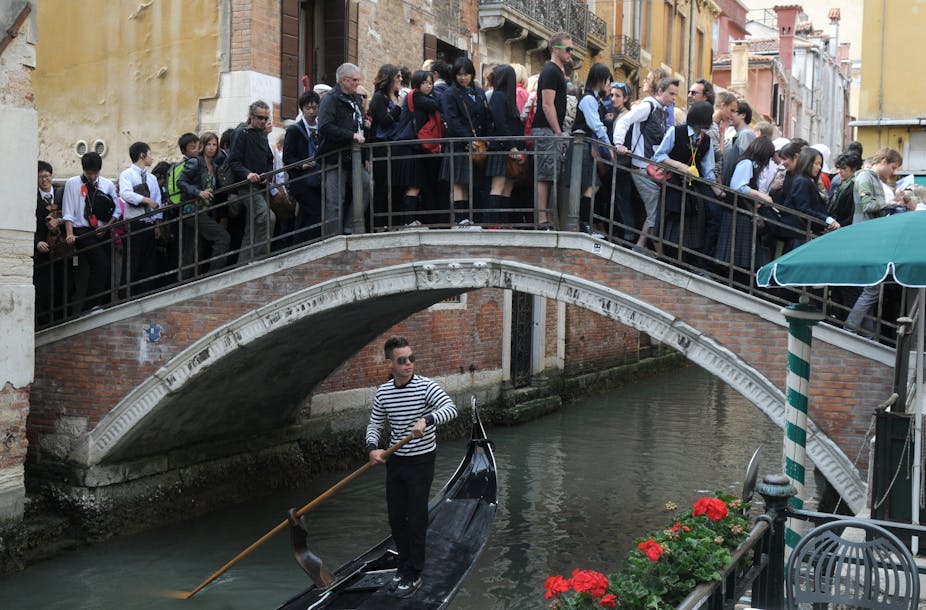
Venice’s history, art and architecture attract an estimated 20 million visitors every year. The city, a Unesco World Heritage site , is often crammed with tourists in search of special memories .
But for the people who actually live there, this level of tourism has become unsustainable. So from 2024, day-trippers will be charged a €5 (£4.31) fee as part of an attempt to better manage the flow of visitors.
The city’s mayor has described the charge – which will be implemented on 30 particularly busy days in the spring and summer – as an attempt to “protect the city from mass tourism”. It comes after cruise ships were banned from entering the fragile Venice lagoon in 2021.
Both policies are designed to respond to the particular problem facing Venice, which is that around 80% of its tourists come just for the day. Research has shown that such a high proportion of day-trippers – who tend to spend little – pushes a tourist destination towards decline .
So from next year, all travellers to Venice will have to register their visit in advance and obtain a QR code online. Day trippers will then have to pay the fee; visitors staying overnight will not.
Other exemptions include children under 14, as well as people who travel to the city for work and study, or to visit family members. To enforce the policy, the municipal police and authorised inspectors will carry out random checks. Anyone without the proper QR code will face a fine of up to €300 (£261).
But some have expressed doubts about whether the €5 fee – the price of a coffee or an ice cream – will be enough to dissuade tourists from travelling to this iconic ancient city. One city politician commented that the charge means Venice has become “a theme park, a Disneyland,” where “you get in by paying an entrance fee.”
Certainly the charge is a lot less than Bhutan’s (recently reduced) “sustainable development fee” of US$100 (£82) per night , which applies to all tourists, and was introduced to encourage “high value, low impact” tourism. Research also indicates that strategies aiming at persuading tourists to come at less crowded times do not reduce numbers at peak periods, but actually end up increasing overall demand.
‘Veniceland’
But Venice has to try something. For researchers , Venice is the embodiment of overtourism , and residents clearly suffer from the consequences – living with the congestion, environmental damage and affects on their lifestyle and culture that 20 million visitors can cause.
This can then lead to a negative response, known as “ tourismphobia ”.Another term, “ Venice Syndrome ” has been used to describe the decline of the city’s permanent population, as citizens feel forced to leave.
Venice’s population is around 50,000 and has been consistently falling, from a peak of 175,000 . If the population falls below 40,000, there is concern that Venice will cease to be a viable living city .
Those who remain have often expressed their discontent. Well publicised protests have included the “ Funeral of Venice ” in 2009, a mock funeral to mourn the sharp drop in population, and “ Welcome to Veniceland ” in 2010, which claimed that Venice was becoming more of a theme park.

And while “tourist taxes” remain popular strategies to address overtourism, their effectiveness remains debatable. Instead, research suggests that a combination of specific economic measures (like fees and variable pricing) and non-economic policies (such as educating visitors) is the best option.
That combination needs to be specially designed for each destination. There can be no one-size-fits-all solution. A report by the World Tourism Organisation on overtourism identifies 11 different strategies and 68 measures to manage visitors’ growth in urban destinations.

Barcelona, often seen as a city which has done well in handling mass tourism, has successfully used a well targeted approach . This has included harnessing new technology to develop a data driven management system to control visitor flows and overcrowding. It also deliberately engaged with the public when deciding on policies, and came up with specific strategies like limiting the number of new souvenir shops.
But it did not resort to charging an entrance fee. Venice will be the first city in the world to do so – and other locations struggling with mass tourism will be keeping a close eye on whether such a bold move turns out to be a success.
- Overtourism
- Give me perspective

Community member RANZCO Education Committee (Volunteer)

Indigenous Graduate Research Program Coordinator

Director of STEM

Chief Executive Officer

Head of Evidence to Action

The survival of Venice hinges on urgent green initiatives
Venice is a popular tourist spot, but its beauty is being threatened by flooding, erosion, pollution and overtourism. How will rigorous green policies and preservation strategies help to save the city?
- Share on Linkedin
- Share on Facebook
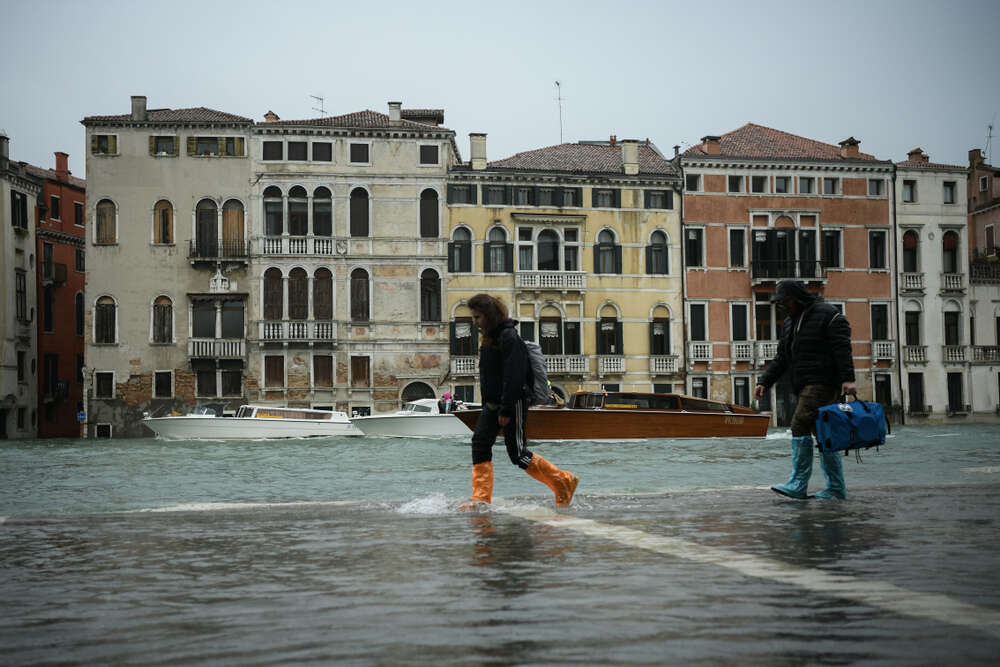
If Paris is the city of love, then Venice is synonymous with beauty. With art and culture in abundance, the floating city has never struggled to enchant its guests, so much so that approximately 20 million tourists flock to Italy’s north-eastern city each year. This number only looks to increase, as the Marco Polo Airport’s owner and operator, SAVE , works to expand the airport to increase capacity to 21 million passengers per annum.

Venice is most popularly known for its beautiful architecture, rich history, unique city landscape with its labyrinthine canals and glistening lagoon. In 1987, “Venice and its Lagoon” was inscribed on the World Heritage List for its rich historical, cultural and architectural heritage.
But earlier this year, Venice made headlines for a different reason, when a stretch of the Grand Canal caught the attention of locals as it appeared to turn fluorescent green. After speculation that it might be a form of protest by environmentalists, local authorities say the green appearance was due to fluorescein – an ecologically harmless substance used to test wastewater networks.
Going green
This was not the first time the Grand Canal turned green. In 1968, the Argentinian artist Nicolás García Uriburu dyed the waters of Venice’s Grand Canal green with the same fluorescent substance during the 34th Venice Biennale in a stunt to raise ecological awareness. For one day, García Uriburu’s transformed the landscape of the city, with its waters fluorescent green until the low tide gradually drained the dye away.
The city is under threat, from erosion, rising sea levels, pollution and overtourism. These fluorescent sightings – whether they are intentional stunts to promote environmental awareness or not – echo the continuous need for greener policies in Venice. The urgency to make environmental preparations is essential, as it braces itself for the looming impacts of climate change, some of which are already presenting considerable challenges for the fragile city. As tourists continue to swarm its busy canals, implementing stringent environmental policy seems more critical than ever, if Venice is to survive.
Venice is sinking
As Venice is spread over more than 100 islands, crisscrossed by 177 canals , which are traversed via the use of its 391 bridges, the threat of the city sinking has been a topic of conversation for decades. Many of the ground floors of the city’s buildings are now uninhabitable, and its canal slides are eroding away from flooding.
With Venice so close to sea level, flooding from the seasonal tidal peaks called the acqua alta has threatened the city since the Middle Ages, records show. But in recent years flooding has become more severe, thought to be a direct result of climate change, according to recent findings. The rising sea waters are damaging Venice’s historical foundations and causing it to erode. The lagoon level has risen by approximately 25cm in the past century and is projected to rise another 30cm by 2050.
In November 2019, Venice faced its second-worst flooding event in nearly a century. The news made headlines globally, showcasing the stunning and distressing images of Saint Mark’s Square, one of the city’s most iconic and low-lying areas, submerged in several feet of water. The water level peaked at 187cm (6.1ft) above sea level, resulting in more than 80% of the city being flooded. The mayor of Venice, Luigi Brugnaro, declared a state of emergency, and the estimated cost of damages was €1bn.
To mitigate these high tides, Venice instigated plans to implement a floodgate system. After several delays, a costly 1.5km wall of dams called MOSE was built in 2020, which successfully held waters back, but as concerns grow around the potential damage to the seabed and local environment, only time will determine the effectiveness of this project against climate risk.
A victim of overtourism
Flooding isn’t the only cause of erosion in this antique city. While Venice avoided a place on the list of endangered heritage sites from Unesco this year, the “city of bridges” has fallen victim to the phenomenon of overtourism; where the excessively high number of tourists is causing negative impacts on the city and those living in it. Once the home to artists and writers, the city has become swamped by holidaymakers with nearly 120,000 visitors a day, considerably outnumbering the 50,000 local residents. Many other cities such as Reykjavik and Dubrovnik have been marked with similar impacts of overtourism, due to factors such as low-cost flights, cruise ships and the proliferation of home-sharing and accommodation platforms such as Airbnb .
The impacts of overtourism, such as pollution and erosion, pose a threat to Venice’s cultural and natural legacy, its economy, and way of life – the very things that contribute to the city’s unique charm. Multiple factors are affecting the quality of water in the Venice lagoon, with rising temperatures and human activity pollution also contributing to algal blooms and other water quality issues.
To address these challenges, the city is taking action to bolster environmental and tourism policies to preserve its vulnerable future. Venice has implemented various new measures that aim to reduce the impacts of climate change and to minimise the negative effects of tourism to protect the city’s structural and environmental needs.
New policies will save Venice
With such a historical city so vulnerable to its surrounding waters, the city saw a ban on cruise ships over 25,000 GRT (gross tonnage) to protect its waterways, forcing them to visit alternative nearby ports. These national waterways are crowned a national monument for Italy, and they will only become increasingly vulnerable to erosion with the oncoming impacts of climate change. This also follows the need to reduce pollution, with the city limiting the use of motorboats and reducing emissions from ships in the lagoon.
Last year, the city also announced that it would implement a tourist tax of €5 per day that will come into effect in 2025, with a trial period beginning as early as next year. This will require travellers to present pre-paid tickets before entering the city at busy times. The purpose of this new initiative is to minimise the effects of overcrowding and encourage tourists to visit less vulnerable areas.
Sustainability capital of the world
On 17 February 2022, the Venice City Council voted in favour of creating the ‘ Venice World Capital of Sustainability ‘ foundation. This organisation will lead several projects aimed at promoting sustainable growth by implementing energy transition and renewable energy production, including a hydrogen hub. The foundation will also seek to revamp the city as an international education centre, focusing on urban renewal and sustainable tourism.
Additionally, there will be interventions for social inclusion and support, with tax relief for residents and plans to support local businesses. Mayor Brugnaro presented the initiative at the Italian Pavilion during Expo 2020 in Dubai and hopes to attract public and private investments totalling between €3bn and €4bn euros.
Without these critical measures to manage tourism, pollution and erosion, Venice’s urban fabric will be endangered. Being the only city of its kind on the planet and a Unesco World Heritage Site, this city possesses exceptional cultural and natural value that demands its preservation. Development and innovation of new technologies, sustainable investment and more stringent green initiatives will help to protect the city’s future for generations to come.
[Read more: Venice had its own ‘Airbnb problem’ during the Renaissance. Here’s how it solved it .]
Sign up for our newsletter and promotions!
Give your business an edge with our CityMonitor
Partner Content
E.on energy solutions, abu dhabi investment office, more relevant, are lightweight foldable solar panels possible one research team is trying to find out, bio-based plastics can reduce waste – but only if we invest in systems to get rid of them, rotterdam's residents crowdfunded its new pedestrian bridge, self-driving cars involved in 11 accidents; google blames human error.
Give your business an edge with our leading industry insights.
Sign up to the newsletter: In Brief
Your corporate email address, i would also like to subscribe to:.
I consent to Verdict Media Limited collecting my details provided via this form in accordance with Privacy Policy
Thank you for subscribing
View all newsletters from across the Progressive Media network.
Venice and its Lagoon rest in fragile balance. Findings of new study on the World Heritage site

A presentation of the “Fragile Venice” study, which touches on some of the most serious future challenges faced by the city of Venice and its Lagoon, will take place today, 12 December (2.30 pm.), in Venice, at the sala del Piovego in the Doge’s Palace. As the city’s urban fabric undergoes deep structural changes, this is the first enquiry of its kind into the wider effects of tourism and shifting patterns of residency, and their future implications for the conservation of this World Heritage site.
The “Venice and its Lagoon” site was inscribed on the UNESCO World Heritage List in 1987, in recognition of its unique historical, archaeological, urban and artistic heritage and exceptional cultural traditions, integrated into an extraordinary natural landscape.
The fragile balance of this environment is the subject of the 2012-2018 Management Plan for the “Venice and its Lagoon” site, which aims to protect and enhance the Site through integrated policies for sustainable development. The primary threats and issues identified by this plan are wave motion (moto ondoso) induced by wind and water traffic, the erosion of the lagoon bed compounded by the illegal harvesting of shellfish, pollution, the conservation of man-made heritage, the progressive loss of resident population in the historical centre and on the islands and growing, almost unsustainable, levels of tourism.
The “Fragile Venice” study investigates the processes that contribute to the degradation of the urban system and identifies possible solutions. It is funded by the Italian Ministry of Cultural Heritage and Activities (MiBAC), and provides support for the implementation of the Management Plan for Venice by analyzing the key elements that affect this historically important area, with a view to providing an appropriate and effective response and debunking many commonly held beliefs.
The study focuses on the impact of human activity on the urban and natural environment of Venice and its Lagoon, physically and in terms of behavior, perception and wider demographic trends. Issues raised include waste disposal, transport, tourism, urban planning and the ever-contentious cruise liners that cut a path through the city, towering over its buildings.
The publication will be introduced by its authors, Paolo Gasparoli and Francesco Trovò. A discussion will follow, moderated by journalist Alberto Vitucci (La Nuova Venezia) and featuring speakers Renata Codello (superintendent for Architectural Heritage and Landscape in Venice and its Lagoon), Domenico Patassini (Co.Ri.La.), Guido Zucconi (IUAV University of Venice), and Philippe Pypaert of the UNESCO Regional Bureau for Science and Culture in Europe, Venice (Italy).
The study is the result of work conducted by the Superintendency for Architectural Heritage and Landscape in Venice and its Lagoon, Venice Municipality and researchers from Milan Polytechnic.
- World Heritage site: http://whc.unesco.org/en/list/394
- Preview the book: http://altralineaedizioni.it/portfolio-item/venezia-fragile/
- Website : http://www.soprintendenza.venezia.beniculturali.it/soprive/venezia-fragile-1
Related items
More on this subject.
Other recent news

share this!
June 25, 2021
Venice reinventing itself as sustainable tourism capital
by Colleen Barry
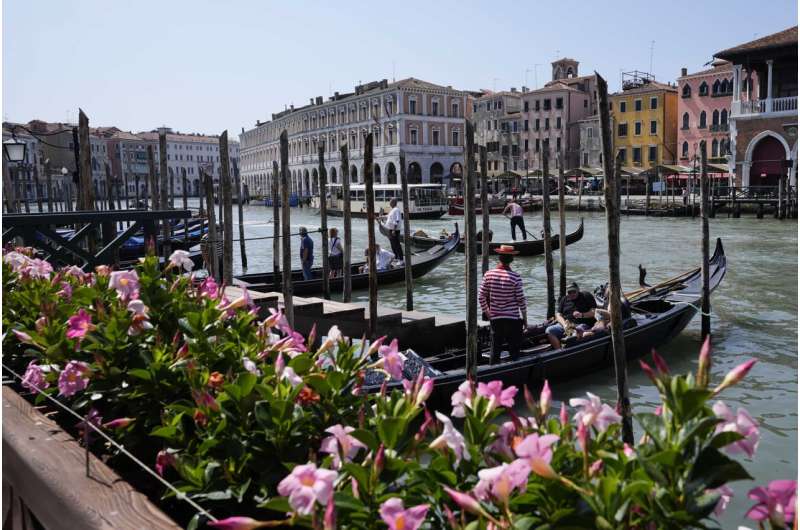
Away from the once-maddening crowds of St. Mark's Square, tiny Certosa island could be a template for building a sustainable future in Venice as it tries to relaunch its tourism industry without boomeranging back to pre-pandemic day-tripping hordes.
Private investment has converted the forgotten public island just a 15-minute waterbus ride from St. Mark's Square into a multi-faceted urban park where Venetians and Venice conoscenti can mix, free from the tensions inherent to the lagoon city 's perennial plague of mass tourism.
"This is the B-side of the Venetian LP," said Alberto Sonino, who heads the development project that includes a hotel, marina, restaurant and woodland. "Everyone knows the first song of the A-side of our long-play, almost nobody, not even the most expert or locals, know the lagoon as an interesting natural and cultural environment.''
It may be now or never for Venice, whose fragile city and lagoon environment alike are protected as a UNESCO world heritage site. Citing overtourism, UNESCO took the rare step this week of recommending Venice be placed on its list of World Heritage in Danger sites. A decision is expected next month.
After a 15-month pause in mass international travel, Venetians are contemplating how to welcome visitors back to its picture-postcard canals and Byzantine backdrops without suffering the past indignities of crowds clogging narrow alleyways, day-trippers picnicking on stoops and selfie-takers crowding the Rialto Bridge.
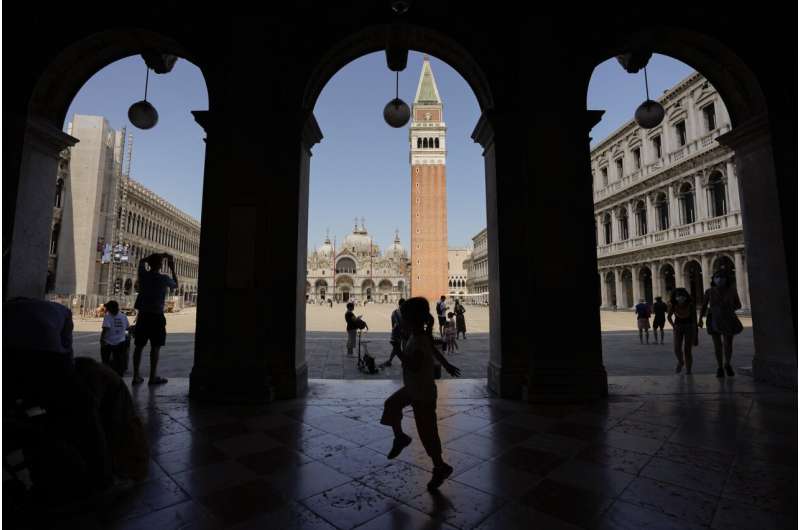
The recommendation by UNESCO's World Heritage Center took into account mass tourism, in particular the passage of cruise ships through the historic center, a steady decline in permanent residents as well as governance and management problems.
"This is not something we propose lightly,'' Mechtild Roessler, director of the World Heritage Center, told AP. "It is to alert the international community to do more to address these matters together."
Veneto regional officials have submitted a plan for relaunching the tourism-dependent city to Rome that calls for controlling arrivals of day-trippers, boosting permanent residents, encouraging startups, limiting the stock of private apartment rentals and gaining control over commercial zoning to protect Venetian artisans.
The proposal, submitted in March, aims to make Venice a "world sustainability capital," and hopes to tap some of the 222 million euros ($265 million) in EU recovery funds to help hard-hit Italy relaunch from the pandemic.
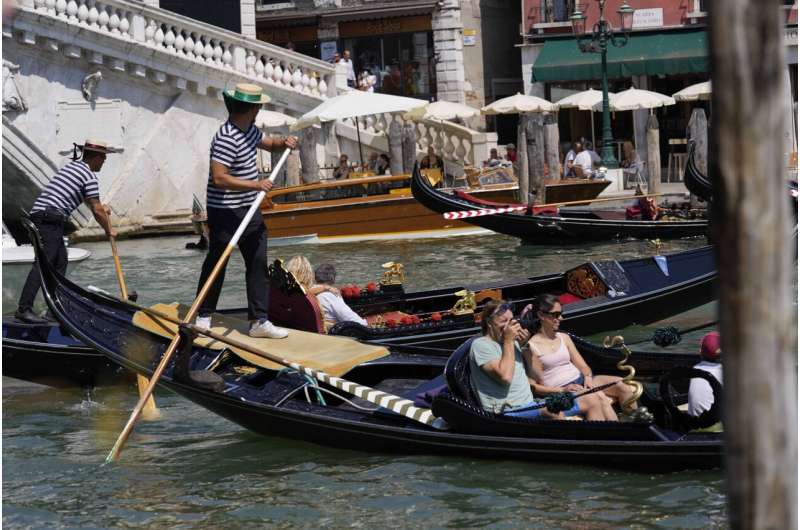
"Venice is in danger of disappearing. If we don't stop and reverse this, Venice in 10 years will be a desert, where you turn the lights on in the morning, and turn them off in the evening,'' said Nicola Pianon, a Venice native and managing director of the Boston Consulting Group whose strategic plan for Venice informed the region's proposal.
The proposal responds to Venetians' urgency to reclaim their city from the mass tourism that peaked at some 25 million individual visitors in 2019, and stanch the exodus of 1,000 Venetians each year. It envisions investments of up to 4 billion euros to attract 12,000 new residents and create 20,000 new jobs.
As much as Venetians groan at the huge tourist flows, the pandemic also revealed the extent to which the relationship is symbiotic.
Along with lost tourist revenue, Venetians suffered a drastic reduction in public transport, heavily subsidized by tourist traffic. Even city museums could not afford to reopen to residents when lockdowns eased.
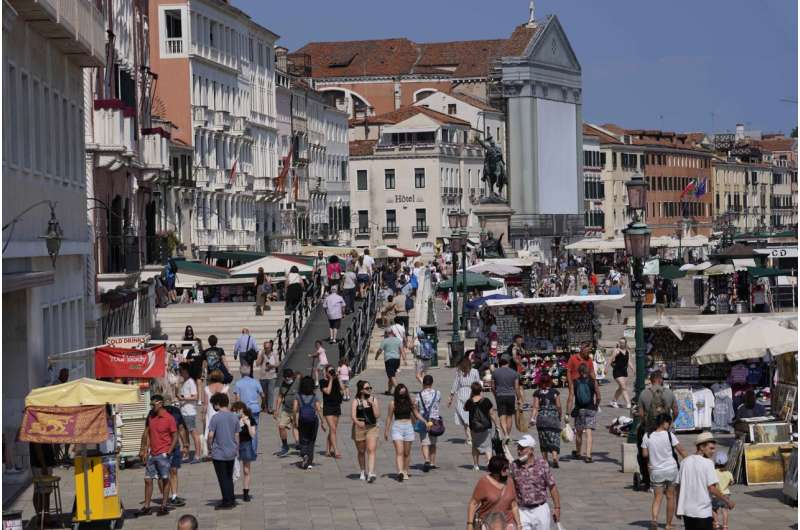
"Venice without tourists became a city that could not serve its own citizens,'' said Anna Moretti, an expert in destination management at Venice's Ca' Foscari University.
The pandemic paused the city's plans to introduce a day-tripper tax last year on visitors who sleep elsewhere—80% of the total tourist footfall.
Some 19 million day-trippers visited in 2019 , spending just 5 euros ($6) to 20 euros each, according to Boston Consulting. On the other side of that equation, the 20% of tourists who spend at least one night in Venice contribute more than two-thirds of all tourist revenue.
A reservation system with an access fee is expected to launch sometime in 2022 to manage day visitors.
With an eye on monitoring daily tourist arrivals, the city set up a state-of-the-art Smart Control Room near the main railroad bridge last year that identifies how many visitors are in Venice at any moment using cell-phone data that also reveals their country of origin and location in the city.
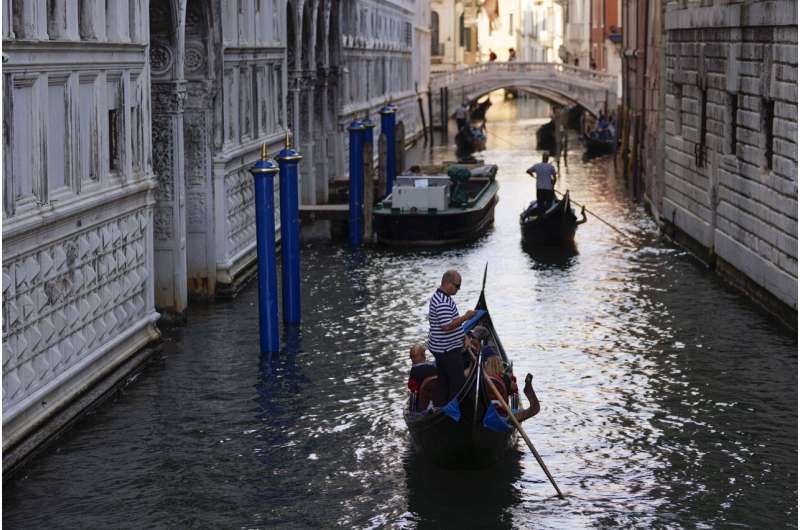
The technology means that future reservations can be monitored with QR codes downloaded on phones, without the need to set up check points. Pianon said the plan is feasible in a city like Venice, which has a limited number of access points and is just 5 square kilometers (2 square miles) in area.
Relaunching more sustainable tourism in Venice would require diverting tourists to new destinations, encouraging more over-night stays, discouraging day trips and enabling the repopulation of the city with new residents.
Much could go wrong. Tourist operators are desperate for business to return, and there is a pent-up global desire to travel. In addition, many changes being sought by regional and city officials must be decided in Rome, including any limits on commercial zoning or Airbnb rental properties.
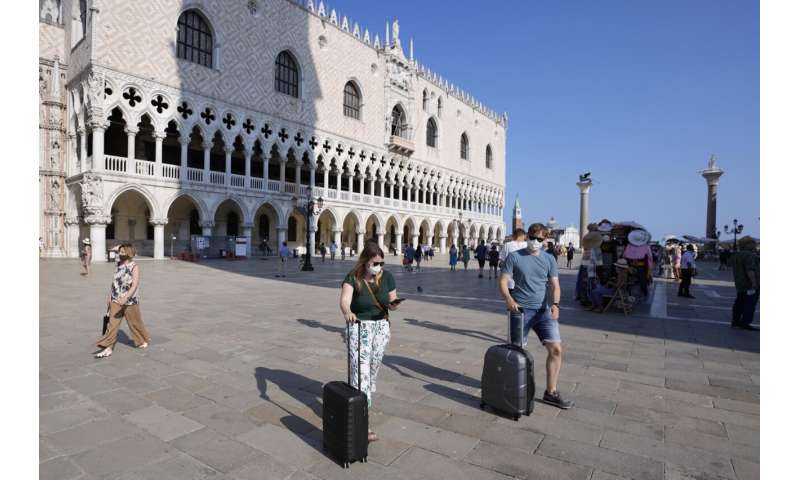
"I think the level of dystopia that we had reached was of such a scale that there has to be a reaction,'' said Carlo Bagnoli, head of an innovation lab, VeniSia, at Ca Foscari University. "There are many projects emerging from many places."
Certosa island, after more than a decade, is still a work in progress, but its success is in the numbers: 3,000 visitors each weekend.
Sonino sees another 10 public sites in the lagoon with redevelopment potential, including former hospitals, abandoned islands and military bases.
He blames Venetians themselves for the city's predicament, being long on talk, short on action. But he feels the pandemic—coupled with the world's abiding interest in Venice's future—might just be the push the city needs to change.
"I prefer to hope that we catch the opportunity. Carpe diem is not only a slogan but an opportunity,'' Sonino said. "We need a lot of ideas and a lot of passion to take Venice from the past to the future."
© 2021 The Associated Press. All rights reserved. This material may not be published, broadcast, rewritten or redistributed without permission.
Explore further
Feedback to editors

Report outlines a path to prosperity for planet and people if Earth's critical resources are better shared
2 hours ago

Smartphone-based microscope rapidly reconstructs 3D holograms
3 hours ago

Observational study supports century-old theory that challenges the Big Bang
4 hours ago

Clovis people used Great Lakes camp annually about 13,000 years ago, researchers confirm

Human 'molecular map' contributes to the understanding of disease mechanisms

JunoCam spots new volcano on active Io

Spiny mice point the way to new path in social neuroscience

Team develops new tool to map fossil fuel emissions from space

NASA scientists recreate Mars's spider-shaped geologic formations in lab for the first time
5 hours ago

Newly discovered antimicrobial could prevent or treat cholera
Relevant physicsforums posts, why does crude oil seep out of the ground on this beautiful caribbean island.
Sep 7, 2024
Should We Be Planting More Trees?
The secrets of prof. verschure's rosetta stones.
Sep 5, 2024
Alaska - Pedersen Glacier: Landslide Triggered Tsunami
Aug 23, 2024
Iceland warming up again - quakes swarming
Shiveluch volcano erupts on kamchatka peninsula.
Aug 18, 2024
More from Earth Sciences
Related Stories

Cruise ships restart in Venice, bring environmental protests
Jun 6, 2021

Thousands demonstrate against cruise ships in Venice
Jun 8, 2019

Devastated Venice braced for third major flood
Nov 17, 2019

Venice canals clear as city tourist-free under coronavirus
Mar 18, 2020

Image: Deserted Venetian lagoon
Apr 15, 2020

Venice calls European port cities to arms over cruise ships
Aug 1, 2019
Recommended for you

Reassessing the stability of the Florida Current: New insights from 40 years of observations
8 hours ago

Oceans absorb 6% more carbon thanks to rain, study reveals
10 hours ago

Summer storms found to be stronger and more frequent over urban areas
Sep 10, 2024

Rolling in the deep: Street flooding can be predicted in seconds with machine learning models
Let us know if there is a problem with our content.
Use this form if you have come across a typo, inaccuracy or would like to send an edit request for the content on this page. For general inquiries, please use our contact form . For general feedback, use the public comments section below (please adhere to guidelines ).
Please select the most appropriate category to facilitate processing of your request
Thank you for taking time to provide your feedback to the editors.
Your feedback is important to us. However, we do not guarantee individual replies due to the high volume of messages.
E-mail the story
Your email address is used only to let the recipient know who sent the email. Neither your address nor the recipient's address will be used for any other purpose. The information you enter will appear in your e-mail message and is not retained by Phys.org in any form.
Newsletter sign up
Get weekly and/or daily updates delivered to your inbox. You can unsubscribe at any time and we'll never share your details to third parties.
More information Privacy policy
Donate and enjoy an ad-free experience
We keep our content available to everyone. Consider supporting Science X's mission by getting a premium account.
E-mail newsletter
- Must Reads: Meet the authors from the Regions and Cities book series
- Spotlight: An in depth look at key issues for regional studies
- Regional Insights: A selection of articles providing a fresh take on regional studies
- Research hacks: Reflections on academic experiences and practices
- RSA Highlights: News and reports from the RSA community
- Back to Issues
New Frontiers in Regional Studies (2024 Theme)
- by Editorial team
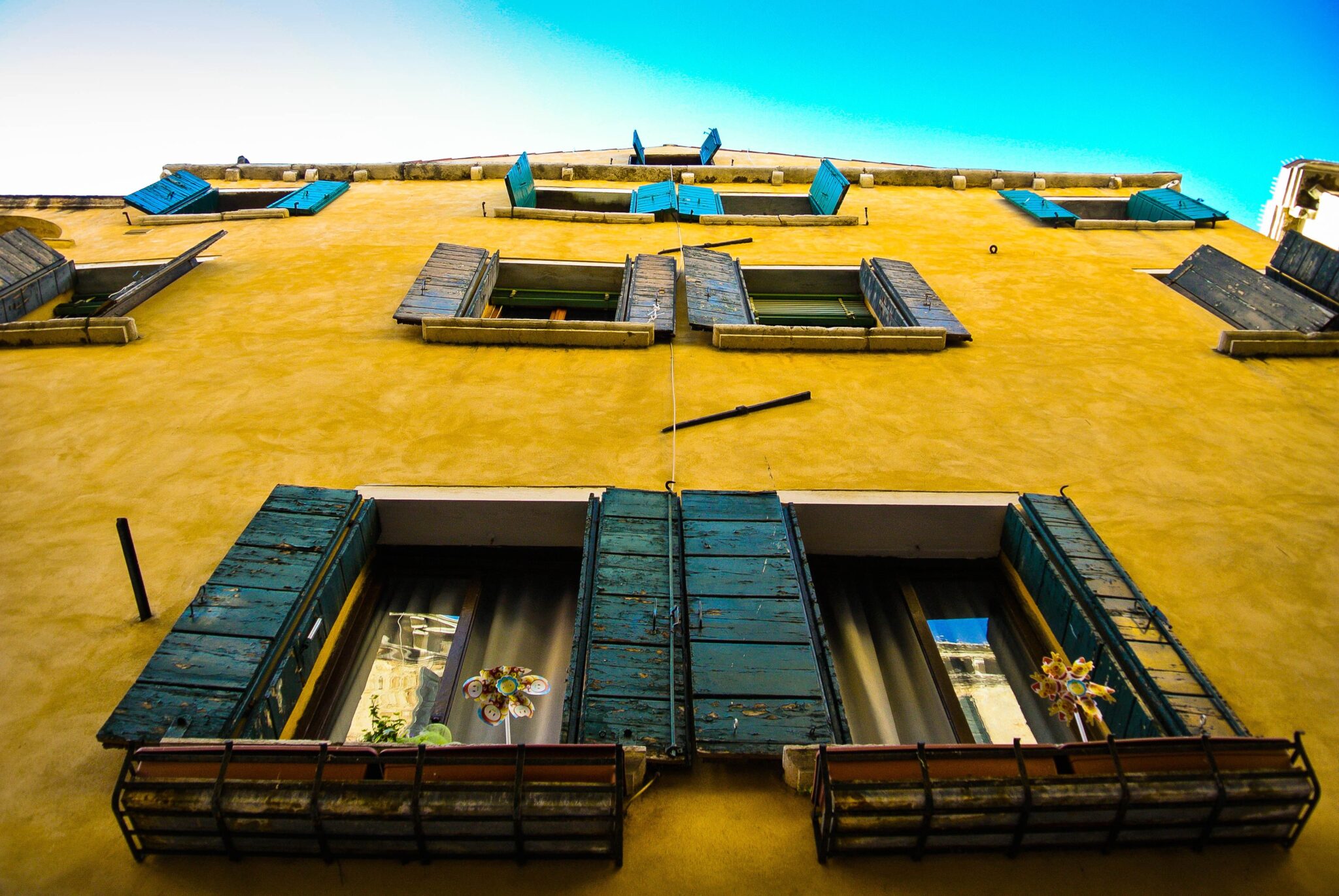
Tourism Flows in Venice: A personal perspective
- by Efthymios - Spyridon Georgiou
- License: cc-by
DOI reference: 13673882.2023.00001010

By Efthymios – Spyridon Georgiou
This article presents a personal reflection on the complex relationship between the daily life of Venice and the city’s tourism flows. Venice’s rich cultural, historical, environmental, economic, and architectural assets are widely recognised, with the city being designated as a UNESCO cultural site . Furthermore, the 2030 Agenda for Sustainable Development , specifically SDG Goal 8.9, emphasises the need to promote sustainable tourism that generates employment opportunities while preserving local culture and products ( United Nations, 2023 ). The tourism flows in Venice are framed by several significant advantages to the city. Firstly, the historical background of Venice, including its Venetian Empire, naval history, and trade, is a powerful draw for tourists. Accessibility to the city is provided through three main routes: the sea, western and central Italy, and northern Europe.
However, the tourism flows also present significant challenges to Venice. The sheer number of tourists visiting the city leads to issues such as overpopulation, overcrowding, and environmental degradation. The sustainability and long-term viability of tourism in Venice are at risk if these challenges are not addressed. Therefore, it is crucial to implement measures that promote sustainable tourism while preserving the city’s unique cultural heritage and economic vitality. While Venice’s tourism flows significantly benefit the city’s economy and cultural heritage, the challenges posed by overtourism must be addressed. A comprehensive approach that balances visitors’ needs with the preservation of local resources and quality of life for residents is essential for the sustainability of tourism in Venice.
The tourism flow in Venice provides several benefits to the city, including:
- Preservation and Promotion of Culture and Architectural Heritage : Venice’s rich historical legacy dates back centuries and is a significant draw for tourists. The preservation and protection of the city’s cultural and architectural assets serve as a developmental physiognomy for the city, creating employment opportunities, promoting local artisans, and generating income for the local economy.
- Cultural and Artistic Activities : Venice offers a wealth of cultural and artistic activities such as the Carnival, museums, jogging, the arts, music, cine, and theatre, which serve as innovative developmental tools for the city. These activities generate employment opportunities and promote the city’s cultural heritage while offering tourists a unique and enriching experience.
- Opportunities in the Summer Season : The exchange of ideas and cultural values during the summer season in Venice offers opportunities for solidarity and peace, promoting international understanding and cooperation.
- Market Opportunities : The Great Market, a bustling hub of activity in Venice, provides an essential source of income and employment for the local economy. It offers tourists various products, including locally crafted souvenirs, food, and beverages.
- Locally Designed Offerings : Venice is home to a thriving community of designers, artisans, and craftspeople whose unique products and services are a significant target of the city’s economy. Italian history is renowned for its distinctive and famous products, and Venice is no exception, offering tourists the opportunity to purchase locally designed offerings that are unique to the city.
The tourism flow in Venice provides several benefits to the city, ranging from cultural and artistic activities to employment opportunities and economic growth. In addition, the city’s rich cultural heritage, architectural legacy, and the availability of diverse locally designed offerings make Venice a unique and attractive destination for tourists worldwide.
The challenge of tourism flows
Venice is a unique place. Citizens of Venice, especially older families, have lived in this place for many years. The daily routine has already changed; Companies, universities, and professional life must adapt to the new modern reality. Imagine that natural beauty often leads to overcrowding problems. Citizens need security daily—the emotional stress increases because the flow of tourists is very high, especially in summer. Venice is currently experiencing significant challenges due to the high influx of tourism. As a result, the city’s fragile ecosystem is facing two critical issues: firstly, the excessive arrival of cruise ships leading to an overflow in the water, and secondly, the uncontrolled number of tourists resulting in overpopulation. These challenges harm the city’s environment and infrastructure, with severe consequences for the residents’ quality of life. The environmental degradation caused by the overflow of cruise ships has become a primary concern, with the city’s canals and lagoon being subjected to significant pollution levels. Moreover, the uncontrolled number of tourists has led to overcrowding Venice’s narrow streets and public areas, which are not designed to accommodate such high volumes of people. These issues threaten tourism’s sustainability and long-term viability in Venice, and urgent measures are required to address them. The following recommendations are proposed. By implementing these measures, stakeholders can help to mitigate the negative impact of tourism flows and create a more sustainable, equitable, and enjoyable experience for both residents and visitors in Venice.
Recommendation for practice:
Recommendation 1
To promote sustainable tourism in Venice, it is crucial to prioritise the safety and security of both tourists and citizens. The city attracts a significant number of visitors each year, but their behaviour can often be disruptive and threaten the well-being of locals. Therefore, improving the sense of security among citizens is essential to fostering a positive environment for both residents and tourists. This includes measures such as increasing police presence in high-traffic areas, implementing strict rules and regulations for behaviour in public spaces, and promoting non-motorised forms of transportation such as walking and cycling (Alberti, 2022).
Recommendation 2
Continuous monitoring and control of the urban landscape are vital for Venice’s sustainable tourism. By closely observing and analysing changes in the city’s physical environment, experts can identify areas of development, strengths, weaknesses, and potential risks to the city’s cultural and architectural heritage. This process requires advanced tools such as powerful software, aerial photography, and drones to facilitate data collection and analysis. With a better understanding of the urban landscape, city planners and policymakers can make informed decisions to protect and promote sustainable tourism in Venice.
Recommendation 3
The use of traditional measures in today’s world is no longer sufficient. With the advent of the Fourth Industrial Revolution, new and innovative solutions have emerged that can revolutionise how we approach various challenges. Software, satellites, aerial photography, and satellite imagery are significant advantages that can be leveraged to achieve better results. Digital measurements are a modern tool that is rapidly evolving and can provide precise and accurate data. For example, vector and raster datasets and laser scanning can capture three-dimensional information about buildings and other structures, such as the drum tower. This information can be used to create databases and three-dimensional information services crucial for preserving architectural and cultural heritage. Virtualisation and documentation can also be used to represent such structures accurately.
Cartography, digital representation, digital terrain models, and statistical visualisation are some results that can be obtained using these advanced technologies. However, it is essential to note that technology development is a dynamic process that requires continuous training, information, and participation in seminars, conferences, and courses for professionals. Therefore, professionals must keep themselves updated with the latest developments to leverage these technologies to their fullest potential.
Recommendation 4
Effective communication is essential for promoting a city’s image; realistic advertising is a modern way of achieving this. Authenticity, proximity, and immediacy are crucial elements that contribute to the message’s credibility. One way of improving a city’s image is through urban branding, where the city’s visual appearance is transformed into a brand image. This approach has been widely recognised as an effective means of promoting a city. Sharing genuine information and advertisements that closely reflect reality is vital. Venice’s maps can represent moments of daily life, historical events, and businesses in the city. Using cartographic images in the form of plans is an innovative way of depicting a city. To create a successful advertising campaign, it is essential to have the political will to invest in technology, history, culture, trade, music, theatre, sports, and gastronomy. Continuous efforts in this regard can enhance the city’s image and attract more visitors.
Recommendation 5
The market is a crucial aspect of Venice’s development, and it requires a comprehensive and adaptable approach in today’s liberal economy. Venice’s market must be coherent with the local, regional, national, European, and global markets to promote peace, solidarity, love, and financial stability. To ensure this coherence, explicit solutions are needed to address the challenges faced by humanity. Urban waterfront projects are vital in urban planning and political interests. They can transform industrial or logistics areas into commercial, residential, recreational areas, or green belts, as has been done since the 1970s (D’Auria & Di Ruocco, 2022). To ensure successful urban waterfront development, it is essential to consider the diverse needs of the local community and tourists. Therefore, Venice should involve stakeholders in planning to create a market-oriented approach catering to local and global demands. This approach can provide economic opportunities and sustainable development to Venice and the wider community.
In conclusion, the sustainable development of Venice requires a multidimensional approach that considers both the economic and environmental impact of tourism and the preservation of its cultural heritage. Implementing innovative and modern tools, such as online applications and mapping technologies, can provide practical solutions to achieve this goal. However, involving all stakeholders, including citizens and tourists, is crucial to ensure everyone is responsible for preserving this unique city. By embracing sustainable practices and working together towards a common goal, Venice can continue to thrive as a vibrant and culturally rich destination for future generations.
Alberti, F., & Nofroni, L. (2022). From car-oriented development toward a bicycle friendly environment. A case study in the Mugello Valley in Tuscany. In Urban Planning and Architectural Design for Sustainable Development (7th Edition, 2022, Vol. Book of Abstract, pp. 50–50) . essay, Urban Planning and Architectural Design for Sustainable Development.
D’Auria, A., & Di Ruocco, I. (2022). Waterfront redevelopment in deindustrialised areas: the role of social impact assessment for a sustainable transition. The case study of Castellammare di Stabia’s waterfront. In Urban Planning and Architectural Design for Sustainable Development (7th Edition, 2022, Vol. Book of Abstract, pp. 88–88) . essay, Urban Planning and Architectural Design for Sustainable Development (UPADSD).
Return to the Regional Insights Section
RELATED ARTICLES

By Anna Momigliano
In early June, the MSC Orchestra, a 2,500-passenger cruise ship, entered the Venetian Lagoon at dawn, sailing through St. Mark’s Basin, past the Doge’s Palace and the still-quiet St. Mark’s Square. It continued its journey through the Giudecca Canal and then docked on Venice ’s main island.
It was the first time a cruise ship had entered the lagoon since the pandemic hit Italy in February 2020.
In a place that is heavily dependent on tourism , and where cruise travel contributes about 3 percent of the local gross domestic product, many in Venice welcomed the ship.
But others did not. Among the latter were 2,000 protesters who met the MSC Orchestra when it sailed on its reverse route two days later. Some were on small boats on the Giudecca Canal; others chanted anti-cruise slogans from the waterfront.
“I hope we made some of the passengers wonder if what they were doing is wrong and think about the social and environmental impact of their vacation,” said Jane da Mosto, a biologist and activist who took part in the protest on a small boat.
The pandemic has put Venice ’s legendary international tourism influx on hold for more than a year. In doing so, it has sparked an animated debate on how mass tourism has negatively affected both the lagoon’s environment and Venice’s character. In this debate, cruise ships have become a metonym for overtourism.
The pandemic hiatus has given the city — which is celebrating its 1,600th birthday this year — a chance to reflect on how tourism’s exponential growth has eroded its social fabric, driving non-touristy businesses and residents out. In the past four decades the city’s historical center (what most Americans mean when they say “Venice”) has lost half of its residents, now down to 50,000.
“The situation is dramatic, there are no houses,” said Maria Fiano, 46, a high school teacher who runs OCIO, an organization that monitors Venice’s housing. According to her estimates , 42 percent of beds in the center are rented to tourists, which landlords find more profitable, leaving many locals struggling to find a place.
But not every tourist has the same cost-benefit ratio. While day trippers — including many of those who are cruise passengers — amount to 73 percent of visitors, they contribute only 18 percent of the tourism economy. The proportion is inverted for people who spend at least one night at a hotel; they represent 14 percent of visitors, but 48 percent of the business.
In March, the local government of Veneto, Venice’s region, approved a plan vowing to curb hit-and-run visitors and attract more slow-paced ones. They also hope to wean Venice off its over-dependency on tourism, creating new places of employment, including a hydrogen plant, a project still in its embryonic phase, and a recently launched accelerator for renewable energy businesses. “It’s the first time that local authorities formally recognized that mass tourism cannot go on like this forever and that depopulation is a serious problem,” said Fabio Moretti, the dean of Venice’s Academy of Fine Arts, which was involved in the plan along with other academic institutions and the Boston Consulting Group.
‘An act of violence against the city’
The presence of large ships in the lagoon, especially those in the immediate vicinity of Venice’s most precious sites, has raised eyebrows at UNESCO and sparked protests by residents since 2012. They argue that mammoth, fuel-guzzling ships are physically incompatible both with Venice, a two-square-mile island, and the lagoon that surrounds it. (A 2019 study published in Nature asserted that the wakes created by large vessels induced the erosion of the shoreline and, through the “continuous resuspension of sediment in the area,” could redistribute industrial pollutants already present in the lagoon.)
It’s not so much the number of visitors they bring overall — only 7 percent of the 27 million tourists who visited Venice in 2019 were cruise passengers, according to a recent study by the Boston Consulting Group — but the fact that they bring thousands of them all at once, overcrowding the city’s historical center while contributing little to its economy.
On average each cruise passenger injects about 200 euros into Venice’s economy, according to the same study, but most of that money goes to port taxes and other services, such as laundry and refueling, rather than city-center businesses like restaurants and museums.
“I’ve never interacted much with cruise tourists, they are rarely seen in places like mine,” said Andrea Degnato, 37, who manages a wine bar called Cantina Arnaldi.
Indeed, because they are often in too much of a hurry to linger in a wine bar, cruise visitors are seen as the opposite of the kind of tourists who would make Venice tourism more sustainable.
“People are unloaded here as a sack of potatoes, they hang around, thousands of them, just a couple of hours, buy a slice of pizza and go back,” said Silvia Jop, 37, a Venetian who works in cinema and cultural events. “If you add this to environmental damages, it’s an act of violence against the city.”
But she also acknowledges that cruises provide work to thousands of people, such as cleaners and porters, although most of them tend to be from the nearby mainland. “Their right to have a source of employment must be respected,” Ms. Jop said.
‘Like having an elephant in a china store’
For centuries, the Venetian Lagoon protected Venice. Built on a cluster of islands, the city could not be attacked from land, and the lagoon’s hard-to-navigate shallow waters and muddy seabed discouraged invaders from sea, who risked getting stranded. Thanks to this inaccessibility, Venice maintained its status as a maritime power throughout most of the Middle Ages.
But today Venice can be reached on cruise ships weighing up to 95,000 tons, docking directly in the heart of the old city.
“It’s like having an elephant in a china store,” said Diego Calaon, a scholar of ancient topography at Venice’s Ca’ Foscari University. He noted that, in its heyday in the late Middle Ages, Venice had a policy of preventing large vessels from docking on its shores, noting that they were much, much smaller than modern cruise ships.
Stretching 30 miles across the Adriatic and shielded from the open sea by two narrow islands, the lagoon is a shallow body of salt water , often less than 5 feet deep, crisscrossed by deeper trenches created by erosion or dug by man. It is only through these canals that vessels of a considerable size can navigate — and, even so, with difficulty: In 2019 a cargo ship was stranded in the eastern part of the lagoon, near Chioggia.
Venice’s historical center, a fish-shaped island in the middle of the lagoon, is skirted by one of its deepest canals, the Canale della Giudecca, where cruise ships currently pass, docking in the island’s main port, the Marittima. But this route is narrow, and dangerously close to the city. In another incident in 2019, a cruise ship lost control and crashed into a dock , injuring at least four people.
“We see only two solutions. Either these huge ships are kept out of the lagoon altogether, or the industry adapts to our environment and sends smaller ships,” said Tommaso Cacciari, a spokesman for the No Big Ships Committee , a grass-roots organization that since 2012 has been fighting the presence of cruise ships in the lagoon.
A new home for ‘the monster’?
On paper, cruise ships are already banned from Venice, if not from the lagoon entirely. In 2012 Italy’s Parliament approved a bill that banned ships over 40,000 tons from parts of the lagoon close to Venice’s main island. But the same law also says that the ban will be applicable only after a viable alternative route is found. Almost a decade later, authorities still haven’t found that alternative.
“We are kept in a limbo,” said Francesco Galietti, the national director for Italy of the Cruise Lines International Association. He added that as soon as the Italian government finds a solution, the industry is ready to comply with whichever alternative route is chosen. “Any solution that makes sense would work for us. The only thing we care about is keeping Venice as a home port for the Eastern Mediterranean.”
But anti-cruise activists argue that it’s unfair that the current law is conditional on finding a new port: “It’s like having a monster knocking on your door and, rather than chasing him away, you worry about finding a new home for the monster before forcing him to leave,” said Ms. da Mosto, the activist.
There are two main proposals: rerouting vessels toward Marghera, the lagoon’s main commercial port on the mainland, or building a port outside of the lagoon.
The problem with Marghera, said a representative of Venice’s Port Authority, is that “it’s a commercial port for containers, it’s not built for passengers.” Also, since Marghera is inside the lagoon, critics say that rerouting cruise ships there will do little to contain environmental damages.
As for building another port altogether: On April 1, Italy’s government approved the allocation of funds for a feasibility study for such a project. But the process of developing the plans for the project alone is expected to last until mid 2022, the Port Authority said, leaving little hope that a new port would provide a solution in the short or even medium term.
Halting cruise traffic until a new port is ready would take an economic toll. Before the pandemic, the cruise industry employed, directly and indirectly, 4,200 people in the area, according to the Port Authority, and brought revenues of 280 million euro (over $332 million), although most of that money does not go to Venice’s historical center.
In the meantime, UNESCO is getting impatient. Last month the agency released a report urging Italy’s government to prioritize “the option of banning large ships from the Lagoon altogether” and to set a time frame to “temporarily reroute ships” toward Marghera or elsewhere.
The agency also announced on the same day that it is considering adding Venice to its list of endangered World Heritage sites. “The recommendations for inscription on the UNESCO List of World Heritage in Danger are not sanctions but alerts to find solutions,” a representative for the agency said in an email statement, mentioning “mass tourism, especially with the presence of cruise ships” as one of the organization’s concerns.
But several government officials, speaking anonymously because Italy’s factitious coalition government is divided on the topic, said they’re feeling pressured by UNESCO and, more broadly, by the negative publicity Venice received when cruise ships returned after the pandemic. Recent protests have brought the attention of the international media on the issue, and Venice is hosting a G20 summit between July 8 and 11.
The summit will provide an opportunity for a hiatus. Authorities have issued a temporary halt on large cruise ships until at least July 18, citing a combination of security measures ahead of the summit and the upcoming Festa del Redentore, the annual festival celebrating the end of the plague that devastated the island in 1576.
Sources in the Italian government say progressives in the coalition are trying to push an extension on the temporary halt until the Marghera port is at least partially ready and hope the international attention brought by UNESCO’s rebuke and by the upcoming summit will help them put pressure on the issue. “We’re feeling the eyes of the world pointed at us,” said one official.
THE WORLD IS REOPENING. LET’S GO, SAFELY. Follow New York Times Travel on Instagram , Twitter and Facebook . And sign up for our Travel Dispatch newsletter : Each week you’ll receive tips on traveling smarter, stories on hot destinations and access to photos from all over the world.
Come Sail Away
Love them or hate them, cruises can provide a unique perspective on travel..
Icon Class Ships: Royal Caribbean’s Icon of the Seas has been a hit among cruise goers. The cruise line is adding to its fleet of megaships , but they have drawn criticism from environmental groups.
Cruise Ship Surprises: Here are five unexpected features on ships , some of which you hopefully won’t discover on your own.
Icon of the Seas: Our reporter joined thousands of passengers on the inaugural sailing of Royal Caribbean’s Icon of the Seas . The most surprising thing she found? Some actual peace and quiet .
Th ree-Year Cruise, Unraveled: The Life at Sea cruise was supposed to be the ultimate bucket-list experience : 382 port calls over 1,095 days. Here’s why those who signed up are seeking fraud charges instead.
TikTok’s Favorite New ‘Reality Show’: People on social media have turned the unwitting passengers of a nine-month world cruise into “cast members” overnight.
Dipping Their Toes: Younger generations of travelers are venturing onto ships for the first time . Many are saving money.
We've detected unusual activity from your computer network
To continue, please click the box below to let us know you're not a robot.
Why did this happen?
Please make sure your browser supports JavaScript and cookies and that you are not blocking them from loading. For more information you can review our Terms of Service and Cookie Policy .
For inquiries related to this message please contact our support team and provide the reference ID below.
- Skip to primary navigation
- Skip to main content
- Skip to primary sidebar
- Skip to footer

The Mindful Traveller
Eco Travel Blog & Photography
Sustainable Travel Guide to Venice, Italy
28 July 2022 · In: Eco Guide , Italy , Venice

The complete sustainable travel guide to Venice, Italy.
Visiting Venice is a once-in-a-lifetime experience : there is nothing more romantic than a weekend getaway wandering through its narrow streets and getting lost.
Not only it is one of the most beautiful cities in the world , but Venice (the Serenissima) is also a UNESCO World Heritage Site, demanding careful attention and preservation for future generations.
Personally, I loved the atmosphere of the city. It is something to experience once in your life! I spent a week there with my partner Matt in the winter, strolling through the streets, getting lost and drinking spritz. And it felt great! But even in this season, Venice was never quiet, and this popularity has come with a price: overtourism .
Overtourism, or mass tourism, is a phenomenon we have witnessed in recent years (especially accentuated by social media) when popular places are visited by excessive numbers of tourists , causing undesirable effects on the destination. And unfortunately, Venice particularly suffers from this phenomenon.
That is why thinking about sustainable tourism and adopting green practices is essential . And if you are planning a trip to Venice but want to learn more about reducing your impact and how to preserve the unique heritage and culture of the Italian city, keep reading!
READ MORE: 3 Perfect Days in Venice, Italy: Complete Itinerary .

What are the impacts of tourism in Venice?
Unfortunately, tourism in Venice mainly has a negative impact due to the overabundance of visitors and the ever-increasing popularity of the Italian city.
Once a place filled with intellectuals and artists, Venice is today flooded by tourists and day-trippers.
Overtourism is a significant problem and translates into an excess of tourists. It results in overcrowding leading to conflicts with locals and increased ecological impact.
Over 36 million people visit Venice yearly, home to less than 50,000 permanent residents. And as many of these visitors focus their time on the most famous landmarks, they accentuate their carbon footprint – and the damage only increases.
Here are some examples of the damages caused by overtourism in Venice:
- Reduced quality of life
- Disrespectful visitor behaviour
- Excessive noise and crowds
- Congested narrow streets
- More pollution and litter
- Lost of authenticity
- Price increases in stores
- Shops cater to tourists, not locals
- Fragile buildings damaged
- Poor employment opportunities
- The rising cost of living
And what has been the result? Depopulation.
The number of permanent residents in Venice continues to decline, and falling under 40,000 would be catastrophic for the Italian city.

What is causing overtourism in Venice?
The causes of overtourism in Venice are complex and diverse.
As in other main European cities, the primary causes of overtourism are often due to low-cost flights, cruise ships and day trips . The latter is a significant issue in a fragile city like Venice. Over 36 million visitors each year, and only half stay overnight, having a consequential impact on the local economy and environment.
What are the positive impacts of tourism in Venice?
Despite these many harmful consequences, tourism still has some positive impacts on the beautiful city of Venice.
Yes, tourism is not all bad! And the goal of this article is not for you to stop travelling. It is about opening your eyes to the significant impacts you have and providing solutions and tips to reduce them as much as possible. All this to enjoy and immerse yourself in the unique Italian culture without damaging it!
The main advantage of tourism in Venice is the economy.
The tourism industry remains the primary source of income in Venice – a city that relies almost entirely on it.
As a result, tourism creates new job opportunities such as mechanics, waiters, water taxis, gondoliers, hoteliers and many more.
Finally, tax revenue from tourists is another benefit. If the number of visitors increases, the GDP will rise, and more employment possibilities will open – and, therefore, more earnings for the city.

What can we do as travellers?
It is no longer possible to ignore the environmental, social and economic impact we have by travelling. And that is why understanding responsible tourism is essential for a sustainable expansion of the industry and the preservation of the places we visit.
Green tourism and slow travel should be how we explore the world and connect with locals. It means travelling in ways that maximise positive impacts and minimise negative ones .
In the case of Venice, the solution is not simple. Avoiding visiting the city, which depends almost entirely on tourism, is problematic and not the best option.
In this sustainable travel guide to Venice, I provide everything you need to plan a green trip to the romantic Italian city along with 10 eco-tips to be a more responsible traveller – explore whilst reducing impact. Enjoy!
Want to know more?
- The Complete Guide to Sustainable Travel
- 10 Best Travel Apps for Exploring Sustainably
- 10 Best Sustainable Backpacks for Travel & Hiking

What does sustainable travel mean?
Before we get into this guide to exploring Venice responsibly, it is essential to understand the definition and purpose of sustainable travel – which does not mean stopping travelling altogether!
Sustainable travel means exploring the world whilst being aware of your surroundings and having a positive social, environmental and economic impact on the places you visit .
It could be by adopting more sustainable methods of transportation, staying in more eco-friendly accommodations, eating local and seasonal foods, or avoiding harmful activities to flora and fauna.
Ultimately, the primary goal of sustainable travel is to create a better and more viable long-term future for tourism .
As a result, in response to climate change and the negative impacts of travelling on our planet, ecotourism was born and today continues to expand.
According to The International Ecotourism Society (TIES) , you can define ecotourism as “ responsible travel to natural areas that conserve the environment, sustains the well-being of the local people and involves interpretation and education ”.
In other words, ecotourism means providing positive experiences to visitors and hosts whilst developing a culture of environmental respect and having a favourable social and economic impact .

Best time to visit Venice (without the crowds)
Although Venice never gets quiet, the best time to visit the Italian city without the crowds is in the winter season : from September to February.
The weather might be wet and chilly from time to time, but you will be able to enjoy the best attractions in a more peaceful way.
The end of September is a particularly great time to discover Venice . The large crows would have left to return to work or school, and the weather would still be pleasant with mild temperatures. Plus, prices will fall, and life will be cheaper.
Finally, if you can, avoid visiting Venice on weekends . It is due to the cruise ship arrivals, as most arrive on a Saturday or Sunday. On top of that, day-trippers will most likely show up during the weekend, as Venice is an ideal getaway for neighbouring towns.
And if you are wondering, the worst month to travel to Venice is August – a perfect example of overtourism. Hotels will be expensive, restaurants will be full, bars will be overcrowded, and the streets will be congested. Therefore, it is not the best time to enjoy the city and connect with the locals.

Shop the printable travel itinerary
Create your dream city break and live an unforgettable adventure!

How to get around Venice sustainably?
You have two main options for getting around Venice: walking or by water.
The easiest way to get around Venice sustainably is on foot . In fact, cars are not allowed in this city! Therefore, it is the perfect place for leaving automobiles behind and exploring walking. Not only will you reduce your impact on the environment, but it will also allow you to slow down, truly appreciate your surroundings and discover hidden places you might otherwise miss.
As a bonus, feel free to bypass the crowded streets, avoid popular hotspots and wander off the beaten path . Venice is perfect for strolling and getting lost.
And do not worry too much about the acqua alta – the city has walkways in case the streets get flooded. However, it is always a good idea to bring rain boots when visiting in autumn and winter .
Finally, another way to get around Venice is to use the Vaporetti – a Venetian public waterbus. Nineteen scheduled lines serve areas of the city and connect them to nearby islands, such as Murano, Burano, and Lido.
Vaporetti can be expensive, especially when buying your ticket on board – so remember to purchase it in advance and choose a multi-day pass if it is easier. However, do not forget that these water boats are not eco-friendly and pollute the lagoon, so only use them when necessary.

Best green hotels in Venice
Venice offers many examples of eco-conscious hotels aiming to preserve the heritage of the city whilst bringing modern and sustainable facilities.
READ MORE: Where To Stay in Venice: 7 Best Areas (& Hotels)
Here are some of the best green hotels in the Serenissima :
1- Corte di Gabriela
Corte di Gabriela is located in the centre of Venice, nestled between the Grand Canal and the Rialto Bridge to the north; between Piazza San Marco and the Gran Teatro La Fenice to the south.
It is a lovely eco-friendly boutique hotel embodying a perfect blend of sustainability and luxury comfort. They stand as one of the pioneers of the eco-friendly approach in Venice and have been honoured with the European Certificate of Eco-Sustainable Hotel.
Ecology and zero-waste are undoubtedly at the core of the hotel. Corte di Gabriela strives for a green approach to tourism through better energy and water management and plastic reduction. For example, they only use glass bottles for the mini-bar and always choose zero-kilometres, local products.
Website: https://www.cortedigabriela.com/
2- Ca’ della Corte
Ca’ della Corte is an XVI-century Venetian Palace, completely renovated in a style that highlights its beauty, elegance and refinement. It also enjoys an excellent location, just 3 minutes from Piazzale Roma.
In addition to being transformed into a majestic hotel, Ca’ della Corte is certified by Eco World Hotels for its attention to the careful disposal of waste, recycling and intelligent use of energy sources and materials.
This unique hotel focuses mainly on the ecological use of power sources, minimising unnecessary consumption and prioritising recyclable and environmentally friendly materials.
Website: https://www.cadellacorte.com/
3- NH Collection Palazzo Barocci
Set in a unique location overlooking the Grand Canal, Palazzo Barocci emerges like a jewel amongst the alleys and offers guests breathtaking views of one of the most romantic cities.
This hotel chain has a broad sustainability strategy that includes low-impact amenities and materials, decreasing water consumption, recycling, reducing CO2 emissions and protecting biodiversity.
Additionally, every NH hotel, including the Palazzo Barocci, is committed to being eco-friendly by avoiding plastic bottles, opting for fair trade and local produce, and choosing biodegradable materials. And to further educate its guests, The Venetian Hotel participates in several events throughout the year to promote sustainability and the importance of preserving our planet.
Website: https://www.palazzobarocci.com/

Best vegan & vegetarian restaurants in Venice
Impossible to visit Italy and Venice without tasting its delightful cuisine! And as more and more Italian restaurants are leaning toward vegan and vegetarian dishes with a classic touch, you will not have to compromise when travelling.
Here are some of the best restaurants in Venice for vegans and vegetarians:
1- La Zucca
La Zucca is a seasonal Venetian restaurant with vegetarian tendencies, established in a cosy setting with tables by the canal. And with seating for no more than 35 people, the atmosphere is classically intimate – a perfect getaway into the local cuisine and culture.
La Zucca is not a vegetarian restaurant but offers many fresh vegetable courses made with natural ingredients. And as its name suggests, its specialities focus on the pumpkin (or ‘Zucca’), offering dishes such as dreamy pumpkin flan and warming soup. They also have several authentic pasta-based plates perfect for vegetarians.
Website: https://www.www.lazucca.it/
2- Pizzeria L’Angelo
Pizzeria L’Angelo is a unique place that offers many delicious options for vegetarians and vegans. The store is mainly a counter-service (no seating) and is perfect for eating on the go. In addition to vegetarian and vegan pizzas, the pizzeria also serves plenty of vegan sandwiches.
Located in the San Marco area, it is a perfect spot to recharge before a day of sightseeing in beautiful Venice, with many highlights and attractions nearby.
Website: Facebook page
3- La Tecia Vegana
La Tecia Vegana is a cosy restaurant specialising in vegan dishes made exclusively with products from organic farming. A fusion cuisine where ethnic mixes and a mission of revisiting classic specialities to suit plant-based lifestyles.
In keeping with their fresh approach to well-known dishes, the style of the restaurant itself is also a tribute to classic Italy, with a red awning outside and the ambience of a traditional Italian eatery inside. A perfect place to immerse yourself in the Venetian heritage whilst preserving our planet.
Website: https://en.lateciavegana.com/

Best (eco-friendly) things to do in Venice
- Just wander & get lost
- Eat and drink like a local
- Explore Piazza San Marco
- See the golden domes of St Mark’s Basilica
- Climb the Campanile
- Visit the Dodge’s Palace
- Enjoy the view from Ponte di Rialto
- Cruise the canal with a gondola
- Admire the Bridge of Sighs
- Take a Venice food tour

Hey, are you enjoying this content?
Enjoy reading this article and want to continue learning more about sustainable travel? Support the blog & community by buying me a coffee! ☕
A little goes a long way. And together, we can create a better future for our planet.

How to be a responsible traveller in Venice
Being a responsible traveller in Venice is not impossible and should be necessary to preserve the natural beauty of the Italian city.
There are ways to be more eco-conscious when visiting the Serenissima, and here are ten sustainable tourism tips to make your trip greener:
1- Travel off-season & avoid cruises
As Venice suffers heavily from overtourism, one of the best things you can do as a responsible traveller is to visit the city in off-peak times, such as winter (from September to mid-February).
You will do the planet a favour but also yourself by being able to discover the floating city without the crowds and genuinely appreciate the beauty of this place. Plus, by travelling off-season, you will contribute to the local economy with year-round jobs – and be able to connect with locals!
Another tip would be to prioritise visiting Venice on weekdays rather than weekends to avoid cruise ships and day trippers.
2- Book direct flights & carbon footprint
Once you have selected the dates for your trip, your next step would be to choose a direct flight to reach Venice.
Venice Airport is easily accessible and well-connected to most European cities. So if possible, choose a non-stop journey as taking off and landing use more fuel than cruising.
You can also use Skyscanner to see flights with lower CO₂ emissions and EcoPassenger to calculate the environmental impact of your journey.
Finally, you can compensate for your impact by investing in local projects and communities BUT do not use carbon offset as a complete solution.
Combine it with other sustainable practices, like prioritising other methods of transport, avoiding single-use plastic on the plane and mindfully packing your suitcase to be ready for your green adventure.
3- Prioritise slow travel
One of the primary causes of overtourism in Venice is day trippers, usually because of cruise ships. Cruise passengers typically do not stay long (less than 20 hours) and do not contribute much to the local economy. Moreover, the first thing they will do once in the city is to visit the most famous sites, such as San Marco Square.
This mass tourism phenomenon in such a small square destroys the cultural authenticity of the place and tarnishes the general charm of the city for tourists and locals. That is why it is essential to learn more about slow travel.
Slow travel is a way of exploring the world, accentuating slowing down and connecting with the places and locals. This approach allows you to take more time to get to know a country and its culture on a deeper level, which can also mean travelling less but staying longer = quality over quantity.
Therefore, if you can, try to visit Venice on your own and stay longer – for 3 or 4 days at least to get to know this wonderful city.
4- Stay in a green accommodation
Once you have booked your transport to Venice, try to reserve your city getaway at a hotel or B&B that adopts eco-responsible practices.
Many accommodations are working toward becoming greener by innovating and reducing their impact. For example, check out these three sustainable hotels in Venice:
- Corte di Gabriela
- Ca’ della Corte
- Palazzo Barocci
As guidance, read the hotel description, look for certification or statement committing to sustainability, or search for places locally owned.
5- Eat local & try typical Venetian cuisine
When travelling to Venice, being mindful of what you eat and buy is crucial to leaving a lower footprint and being a sustainable explorer. Ask the locals where they like to eat, buy your food at local markets, and go to local vegetarian and vegan restaurants supporting farmers and sustainable products.
Plus, more and more Italian restaurants are leaning toward vegan and vegetarian dishes with a classic touch, so you will not have to compromise when travelling. Here are some of the best restaurants in Venice for vegans and vegetarians:
- Pizzeria L’Angelo
- La Tecia Vegana
6- Be zero-waste & avoid plastic
Always pick up your trash or any you come across, and avoid plastic at all costs! And the best way to reduce waste when travelling to Venice is to arrive prepared. That is why considering what you bring with you is so important. Here are some ideas, bring:
- Reusable water bottles (reduce single-use plastic)
- Eco-friendly tote bags (reduce single-use plastic)
- Travel towels (reduce water usage)
- Cutlery and containers (reduce single-use plastic)
- Reusable straws (reduce single-use plastic)
- Biodegradable shampoos (reduce toxic chemicals)
- Zero-waste sunscreens (reduce single-use plastic & toxic chemicals)
- Solid toiletries (reduce water usage)
- Portable solar chargers (reduce energy usage)
7- Shop local & support authentic artisans
The souvenirs we bring home matter as much as how we travel. Being mindful of your shopping habits is another way to become more responsible and contribute to the local economy.
Ask questions to learn more about the product you want to buy and its origin, shop local, decline objects made with animal products and refuse single-use plastic bags.
Be sure to support authentic, local artisans and be aware of tourist traps and illegal vendors. For this, look for certification and follow your own judgement.
8- Use water fountains & be mindful of your water consumption
Venice is full of free water fountains offering fresh and cold water – so bring your reusable water bottle to stay hydrated, even in winter! There is no reason for you to buy bottled water during your stay.
Sustainable travel in Venice is also about paying attention to your water consumption (and it should be the case whatever your destination!). It means: having shorter showers, checking all taps are closed properly or not washing your hotel towels daily. We often overlook the latter, but reusing your towel or bringing your own will save a lot of water and do good for the planet.
9- Go on a gondola ride (and avoid cruise ships)
I know going on a gondola ride might sound very touristy, but it is by seeing Venice from the water that you will truly appreciate its beauty. Plus, by taking a gondola ride (instead of water taxis), you will help preserve the lagoon, the environment, the fragile buildings and the local economy by supporting local and authentic gondoliers.
However, do not use the gondolas near popular spots to help spread mass tourism. Instead, venture into more secluded streets and local areas to book your gondola – and enjoy the ride!
10- Respect the locals and their culture
Remember that Venice is a city and people live there.
Treat people and their surroundings with respect. Sustainable travel in Venice is not only about the environment but also about the locals. So, smile, be respectful and try to learn a few Italian words.
It also applies to cultural sites. Be quiet, dress appropriately, do not touch anything and ask if you have any questions. And if you can, limit your time on Piazza San Marco.
In addition, walk to the right, be mindful when taking photos (do not stand on bridges forever!), do not sit on the floor or any step, and do not feed pigeons.

Do you have any other suggestions for sustainable travel in Venice? Let me know in the comments below!
With love ♡ Lucie
- Share on Twitter Share on Twitter
- Share on Facebook Share on Facebook
- Share on Pinterest Share on Pinterest
You will also love

STAY INSPIRED
Join our community today to receive exclusive travel tips & behind-the-scene stories that will inspire your next adventures, directly to your inbox. Can't wait to see you inside ♡
Reader Interactions
Leave a reply cancel reply.
Your email address will not be published. Required fields are marked *
Save my name, email, and website in this browser for the next time I comment.

15 Travel Books to Inspire Your Next Eco-Adventure
Follow the journey.

On the Blog
- Privacy Policy
Become an insider!
And receive exclusive travel tips & behind-the-scene stories ♡
Copyright Lucie Charpentier © 2024 · Theme by 17th Avenue
Stay up to date with notifications from The Independent
Notifications can be managed in browser preferences.
UK Edition Change
- UK Politics
- News Videos
- Paris 2024 Olympics
- Rugby Union
- Sport Videos
- John Rentoul
- Mary Dejevsky
- Andrew Grice
- Sean O’Grady
- Photography
- Theatre & Dance
- Culture Videos
- Fitness & Wellbeing
- Food & Drink
- Health & Families
- Royal Family
- Electric Vehicles
- Car Insurance Deals
- Lifestyle Videos
- Hotel Reviews
- News & Advice
- Simon Calder
- Australia & New Zealand
- South America
- C. America & Caribbean
- Middle East
- Politics Explained
- News Analysis
- Today’s Edition
- Home & Garden
- Broadband deals
- Fashion & Beauty
- Travel & Outdoors
- Sports & Fitness
- Climate 100
- Sustainable Living
- Climate Videos
- Solar Panels
- Behind The Headlines
- On The Ground
- Decomplicated
- You Ask The Questions
- Binge Watch
- Travel Smart
- Watch on your TV
- Crosswords & Puzzles
- Most Commented
- Newsletters
- Ask Me Anything
- Virtual Events
- Wine Offers
- Betting Sites
Thank you for registering
Please refresh the page or navigate to another page on the site to be automatically logged in Please refresh your browser to be logged in
Venice reinventing itself as sustainable tourism capital
It may be now or never for venice, article bookmarked.
Find your bookmarks in your Independent Premium section, under my profile
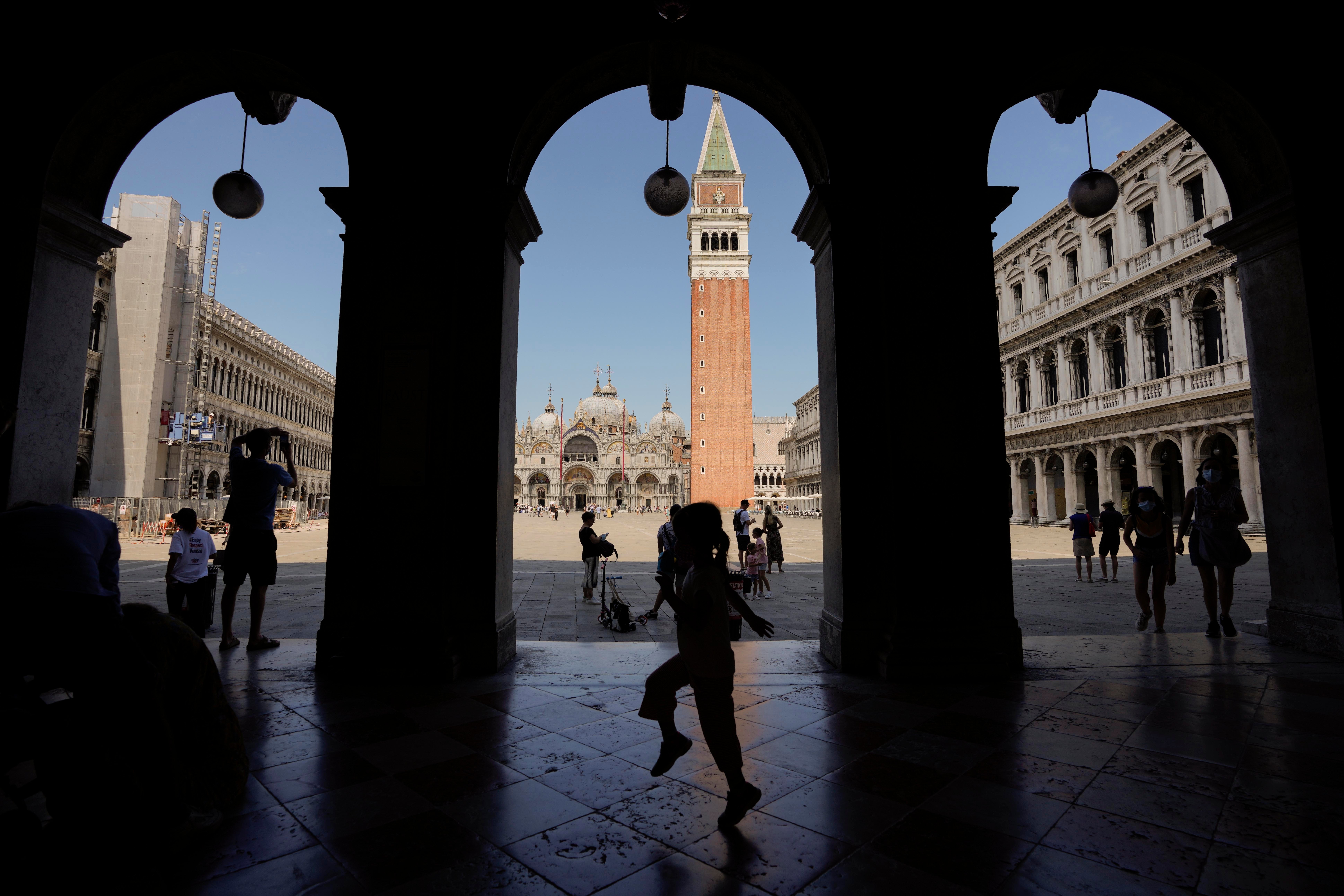
For free real time breaking news alerts sent straight to your inbox sign up to our breaking news emails
Sign up to our free breaking news emails, thanks for signing up to the breaking news email.
Away from the once-maddening crowds of St. Mark’s Square, tiny Certosa island could be a template for building a sustainable future in Venice as it tries to relaunch its tourism industry without boomeranging back to pre-pandemic day-tripping hordes.
Private investment has converted the forgotten public island just a 15-minute waterbus ride from St. Mark’s Square into a multi-faceted urban park where Venetians and Venice conoscenti can mix, free from the tensions inherent to the lagoon city’s perennial plague of mass tourism.
“This is the B-side of the Venetian LP,” said Alberto Sonino, who heads the development project that includes a hotel, marina, restaurant and woodland. “Everyone knows the first song of the A-side of our long-play, almost nobody, not even the most expert or locals, know the lagoon as an interesting natural and cultural environment.’’
It may be now or never for Venice, whose fragile city and lagoon environment alike are protected as a UNESCO world heritage site. Citing overtourism, UNESCO took the rare step this week of recommending Venice be placed on its list of World Heritage in Danger sites. A decision is expected next month.
After a 15-month pause in mass international travel, Venetians are contemplating how to welcome visitors back to its picture-postcard canals and Byzantine backdrops without suffering the past indignities of crowds clogging narrow alleyways, day-trippers picnicking on stoops and selfie-takers crowding the Rialto Bridge.
The recommendation by UNESCO’s World Heritage Center took into account mass tourism, in particular the passage of cruise ships through the historic center, a steady decline in permanent residents as well as governance and management problems.
“This is not something we propose lightly,’’ Mechtild Roessler, director of the World Heritage Center, told AP. “It is to alert the international community to do more to address these matters together.”
Veneto regional officials have submitted a plan for relaunching the tourism-dependent city to Rome that calls for controlling arrivals of day-trippers, boosting permanent residents, encouraging startups, limiting the stock of private apartment rentals and gaining control over commercial zoning to protect Venetian artisans.
The proposal, submitted in March, aims to make Venice a “world sustainability capital,” and hopes to tap some of the 222 million euros ($265 million) in EU recovery funds to help hard-hit Italy relaunch from the pandemic.
“Venice is in danger of disappearing. If we don’t stop and reverse this, Venice in 10 years will be a desert, where you turn the lights on in the morning, and turn them off in the evening,’’ said Nicola Pianon, a Venice native and managing director of the Boston Consulting Group whose strategic plan for Venice informed the region's proposal.
The proposal responds to Venetians' urgency to reclaim their city from the mass tourism that peaked at some 25 million individual visitors in 2019, and stanch the exodus of 1,000 Venetians each year. It envisions investments of up to 4 billion euros to attract 12,000 new residents and create 20,000 new jobs.
As much as Venetians groan at the huge tourist flows, the pandemic also revealed the extent to which the relationship is symbiotic.
Along with lost tourist revenue, Venetians suffered a drastic reduction in public transport, heavily subsidized by tourist traffic. Even city museums could not afford to reopen to residents when lockdowns eased.
“Venice without tourists became a city that could not serve its own citizens,’’ said Anna Moretti, an expert in destination management at Venice’s Ca’ Foscari University.
The pandemic paused the city’s plans to introduce a day-tripper tax last year on visitors who sleep elsewhere — 80% of the total tourist footfall.
Some 19 million day-trippers visited in 2019 , spending just 5 euros ($6) to 20 euros each, according to Boston Consulting. On the other side of that equation, the 20% of tourists who spend at least one night in Venice contribute more than two-thirds of all tourist revenue.
A reservation system with an access fee is expected to launch sometime in 2022 to manage day visitors.
With an eye on monitoring daily tourist arrivals, the city set up a state-of-the-art Smart Control Room near the main railroad bridge last year that identifies how many visitors are in Venice at any moment using cell-phone data that also reveals their country of origin and location in the city.
The technology means that future reservations can be monitored with QR codes downloaded on phones, without the need to set up check points. Pianon said the plan is feasible in a city like Venice, which has a limited number of access points and is just 5 square kilometers (2 square miles) in area.
Relaunching more sustainable tourism in Venice would require diverting tourists to new destinations, encouraging more over-night stays, discouraging day trips and enabling the repopulation of the city with new residents.
Much could go wrong. Tourist operators are desperate for business to return, and there is a pent-up global desire to travel. In addition, many changes being sought by regional and city officials must be decided in Rome, including any limits on commercial zoning or Airbnb rental properties.
“I think the level of dystopia that we had reached was of such a scale that there has to be a reaction,’’ said Carlo Bagnoli, head of an innovation lab, VeniSia, at Ca Foscari University. “There are many projects emerging from many places.”
Certosa island, after more than a decade, is still a work in progress, but its success is in the numbers: 3,000 visitors each weekend.
Sonino sees another 10 public sites in the lagoon with redevelopment potential, including former hospitals, abandoned islands and military bases.
He blames Venetians themselves for the city’s predicament, being long on talk, short on action. But he feels the pandemic -- coupled with the world’s abiding interest in Venice’s future -- might just be the push the city needs to change.
“I prefer to hope that we catch the opportunity. Carpe diem is not only a slogan but an opportunity,’’ Sonino said. “We need a lot of ideas and a lot of passion to take Venice from the past to the future.”
Subscribe to Independent Premium to bookmark this article
Want to bookmark your favourite articles and stories to read or reference later? Start your Independent Premium subscription today.
New to The Independent?
Or if you would prefer:
Hi {{indy.fullName}}
- My Independent Premium
- Account details
- Help centre
VeneziaUnica.it è il portale ufficiale della Città di Venezia dove trovare tutte le informazioni sull’offerta di mobilità, culturale e turistica del territorio. Su questo sito è inoltre possibile acquistare direttamente in modo semplice e sicuro tutti i servizi offerti.
VeneziaUnica.it è un’iniziativa di Ve.la. Spa, società partecipata dal Comune di Venezia e dall’Azienda Veneziana della Mobilità S.p.A.

- Request new password
Search form
Please, add at least one card

The Official City Pass of the City of Venice BOOK IN ADVANCE AND SAVE!
MORE iNFORMATION
You can save by booking at least 30 days before arrival
V è nezia nelle tue mani!
CREA LA TUA VENEZIA UNICA
Scegli i servizi, ritira la tessera, you are here, sustainable venice.

A sustainable tourism - not altering the natural and artistic environment, and not obstructing the development of other social and economic activities in harmony with the daily life of residents - is necessary to preserve the extraordinary beauty and uniqueness of Venice.
#EnjoyRespectVenezia is the City of Venice's awareness campaign launched during the International Year of Sustainable Tourism for Development (2017) and designed to direct visitors towards the adoption of responsible and respectful behaviour towards the environment, landscape, artistic beauties and identity of Venice and its inhabitants.
The objective is to raise awareness of tourist impact, with the belief that responsible travelling can contribute to sustainable development.
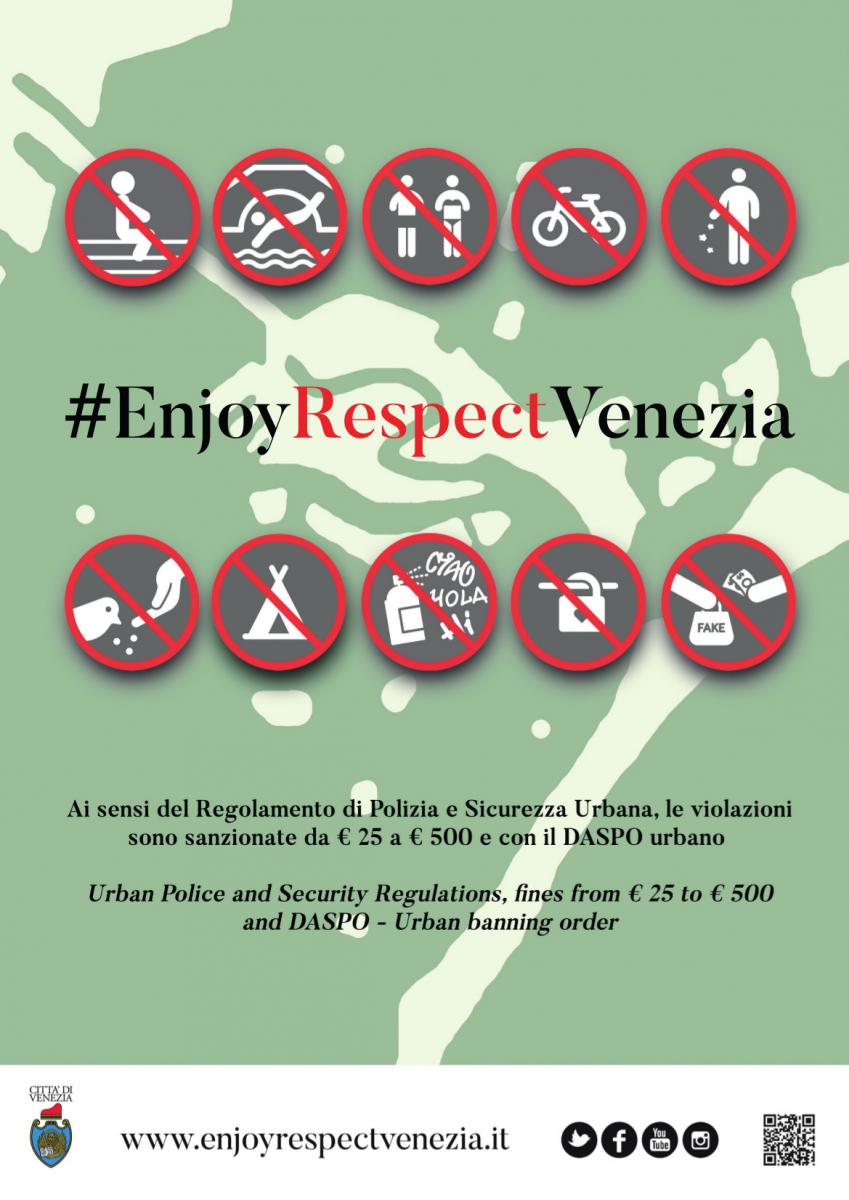
- 1. Discover the hidden treasures of Venice in the least visited places to appreciate Venice’s exceptional beauty.
- 2. Explore the islands in the lagoon and Mainland Venice , participate in events spread throughout the Metropolitan City.
- 3. Taste the local products and typical Venetian cuisine .
- 4. Visit the artisans' workshops and learn about the ancient trades that still exist today in Venice. Choose only original products and do not buy any goods from illegal vendors.
- 5. Book tours with qualified tourist guides able to recount Venice's thousand-year-old history.
- 6. Walk on the right , do not stand at any time on bridges, do not even lead bikes by hand.
- 7. Steps of churches, bridges, wells, monuments and banks of streams, canals etc. are not picnic areas. Please use the public gardens for this necessity. Consult the map .
- 8. St. Mark's Square is a monumental site and excluding pertinent bars and restaurants, it is forbidden to stand at any time in order to consume food or drink.
- 9. Venice is a city of art : it is forbidden to camp, walk about in swimwear, dive and swim. The beaches at Lido and Pellestrina can be easily reached .
- 10. Respect the environment and artistic wealth : do not litter, do not vandalize with graffiti, or padlocks. Do not give food to the pigeons .
- 11. If you are staying in an apartment or flat , please get informed about the garbage recycling collection .
- 12. Plan your trip and choose to visit Venice when it is less crowded . Find out more about Venice entry fee .
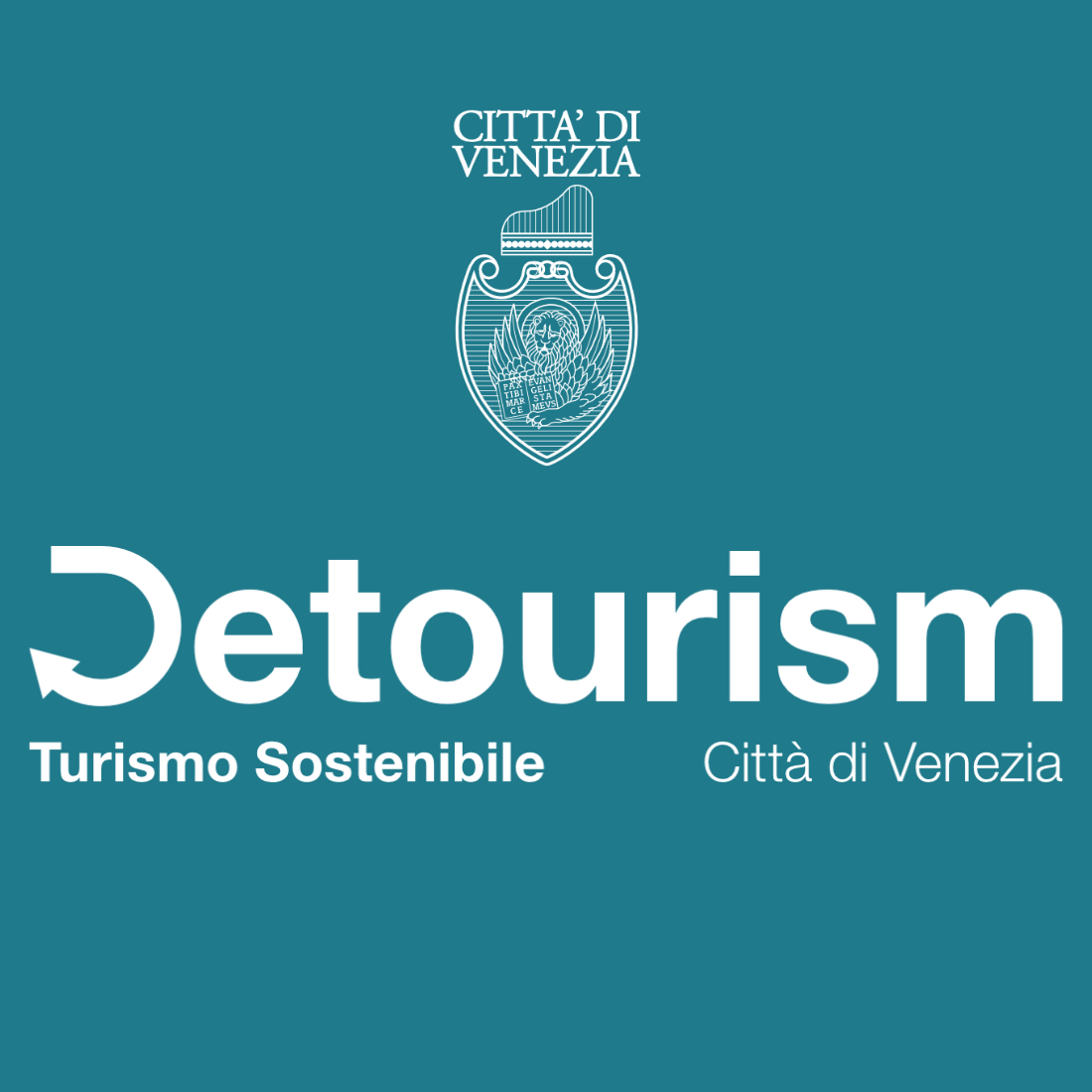
#Detourism suggests authentic experiences, out-of-the-ordinary places and itineraries not only in the city centre of Venice, but also on the lagoon islands and mainland.
These sustainable itineraries lead to unusual glimpses of the city; buildings, gardens, churches and museums unknown to the majority; historic boroughs on the islands, ancient fortresses, natural areas and bicycles paths on the mainland.
The Detourism web-magazine suggests travel ideas to explore an unknown and secret Venice, while the Detourism newsletter collects monthly suggestions on visiting unusual art exhibitions and events. View the newsletter archive
We recommend…

Venice Boat Show
Buy the official merchandising of the Venice Boat Show online
Visit the online shop
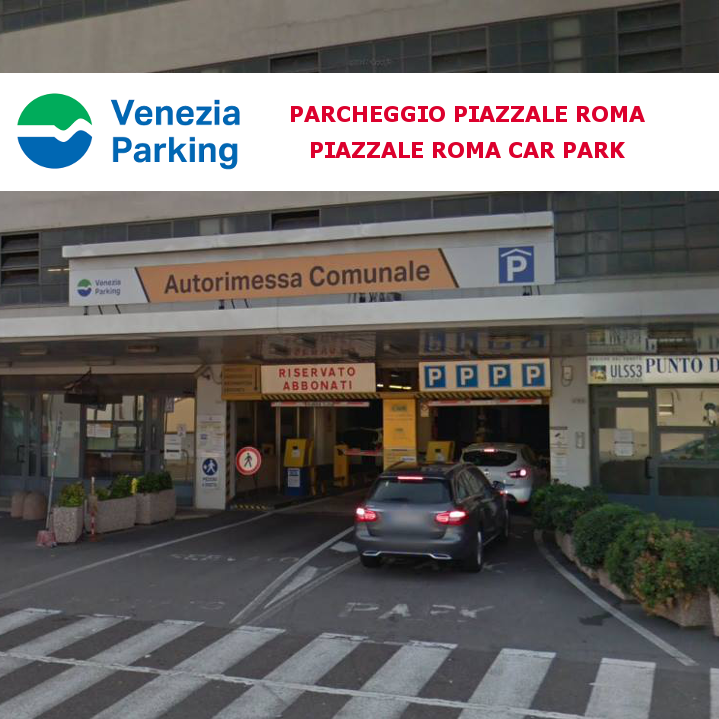
PIAZZALE ROMA CAR PARK
Parking at "AUTORIMESSA" - AVM Municipal Garage
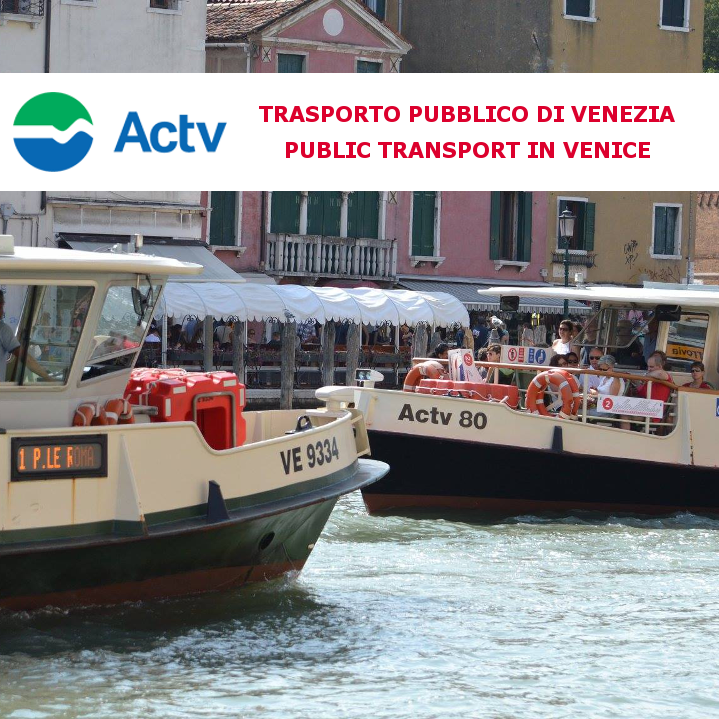
ACTV - PUBLIC TRANSPORT IN VENICE
Public Transport Services (vaporetto and buses in the City of Venice)
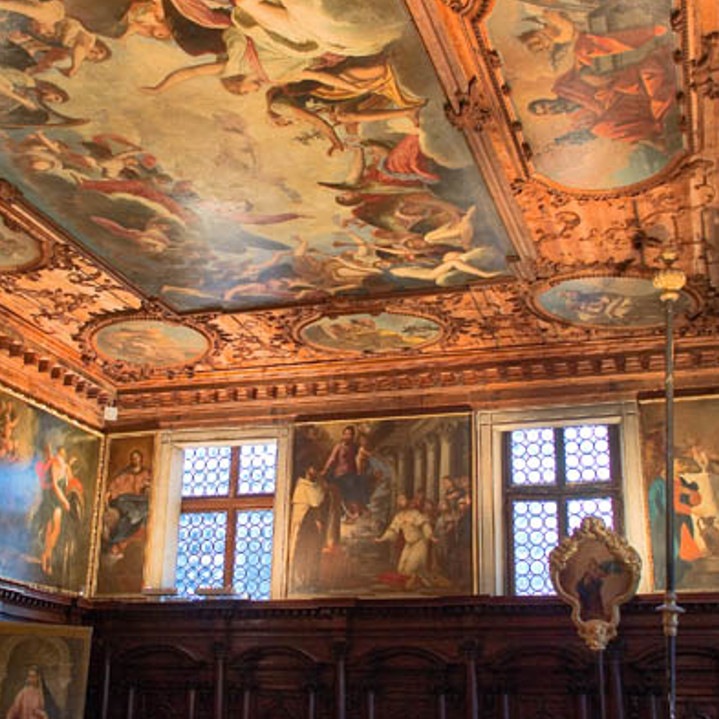
SCUOLA GRANDE DEI CARMINI
It houses numerous works of art including the ceiling with paintings by G.Tiepolo
16 Tips for Slow and Sustainable Travel in Venice

I may earn income from affiliate links or partnerships in this post. I spend time to curate tours or products that align with my values. Thanks for supporting my work, at no additional cost to you.
Last updated on April 24th, 2024 at 08:05 pm

A re you curious about simple yet effective tips you can implement for sustainable travel in Venice? T hese 15 things are critical for anyone planning a trip to Venice. Sustainable travel in Venice isn’t just an option for the conscious traveler; it is something that all travelers should adopt immediately. Suppose we, as travelers, don’t implement these travel tips for Venice. In that case, Venice will continue to lose its cultural and historical authenticity, and we lose the very charm that makes Venice worth traveling to see. Going beyond sustainable travel, I encourage you to take it one step further for positive impact tourism in Venice and be willing to go out of your way to reap the benefits of slow travel in Venice.
Venice is one of the major battlegrounds for sustainable travel. As large cruise ships dominate Venice’s tourism industry, cruises contribute to the degradation of Venice’s UNESCO status and cultural significance and contribute to tourism leakage making sustainable travel as crucial as ever. These 15 tips complement my comprehensive sustainable, and slow travel itinerary for Venice for a well-rounded stay to save travel in Venice.

NEW for 2024
Venice is officially implementing a tourist access fee of 5 euros. This fee applies to day trippers and anyone visiting for the day on 29 specific days and aims at combatting overtourism. Learn more in my in-depth article covering all the details about Venice’s new tourism access fee.
The best way to avoid this fee is to follow this guide: stay longer and support sustainable tourism.
1. Skip the Cruise Ships
This should go without saying, but Venice’s cruise industry is incredibly problematic. From creating waves that destroy heritage buildings to dropping off hundreds of tourists in the same spot, creating chaos in the city center, and contributing to tourism leakage, these ships and their clientele bring many problems. Locals have been standing up, demanding action by the government to regulate cruises. Venice finally banned cruise ships from docking in the Lagoon, but cruise passengers will still visit other regional docks. Cruise passengers don’t stay long or add much to the local economy. So, the most meaningful impact you can make is visiting on an independent itinerary or working with local tour companies.

2. Slow Travel Venice
If your itinerary in Venice is any less than two full days, your visit is unlikely to be sustainable. I recommend staying at least 3 – 4 nights. While most cruise visitors only stay in Venice for less than 20 hours, they only see a couple of touristy highlights in San Marco square. Why is slow travel in Venice critical? Enjoying a slower-paced itinerary allows you to help diffuse mass tourism by visiting local neighborhoods and less touristy islands while allowing time to see the iconic sights. Plus, with most tourists only stopping to visit Piazza San Marco, it loses its cultural authenticity as mass crowds are bombarded by cheap souvenirs. It degrades the overall charm of Venice for you, other tourists, and locals. It is essential to take the time to connect with locals to learn about the culture and history of Venice, along with the modern-day struggles. Following my sustainable itinerary to Venice, you’ll have plenty of time to do and see it all more mindfully.

3. When Visiting the Main Tourist Sights, Consider…
Many people ask me if visiting the main tourist sights is sustainable. In my opinion, yes, it can be! In fact, it can add important context to your stay, but as always, there are a few things to consider.
- Seeing the touristy highlights should be part of a longer multi-day itinerary. That way, you don’t feel like you have to cram them all in one day.
- You should also hire a local guide to tour St. Mark’s Basilica and Doge’s Palace. This will give you so much living context to the history and give you a local perspective.
- Have a plan B. There is so much to see and do in Venice that it is not the end of the world if you miss out on Doge’s Palace and San Marco square. They are amazing, but if you only see them by waiting in line for hours in the heat of summer, you’ll have a much better time skipping them and heading into local neighborhoods.
- Dress modestly if visiting St. Mark’s Basilica. Otherwise, you must buy an imported, over-priced scarf before entering.

4. Hire a Local Guide Committed to Sustainable Tourism
Venice is a complicated place, with a rich past of great historical and cultural prominence and an uncertain future as locals grapple with the harmful behaviors of cruise lines and irresponsible tourists. To understand the nuances and ensure you’re engaging in sustainable tourism in Venice, you must book a guide committed to sustainable tourism. We found Matteo from When in Venice listed on Venice Guides for Sustainable Tourism . This network of guides has come together and taken an oath to only engage in responsible practices during their tours. Beyond running sustainable tours, many work with the local and national governments fighting for a better system to prevent the further loss of Venice’s identity. We hired Matteo as a private guide, and he was 10000% worth every penny we spent. For 3+ hours, we enjoyed casual conversation, learning about history, culture, modern life, recycling, the impact of unsustainable tourism, and asking questions of free will. It was clear that Matteo, a lifelong Venice resident, was committed to showing the best side of his city. We hired him for the off-the-beaten-path tour, which suited our tastes. Together we wandered local neighborhoods away from the touristy sights and fell in love with the city’s charm without crowds.
Use Withlocals!
If you want a hassle-free way to find a local guide, check out the platform Withlocals. Withlocals is an easy way to find and book experiences with local guides. This is a great way to engage in cultural exchange as they share their perspective and take you to the local hidden gems, all while delivering an authentic travel experience. Venice has a great network of local guides excited to share their city with you. The best part is they are a B Corp and have a strong passion and commitment to sustainability!

When we visited St. Mark’s Basilica and Doge’s Palace, we booked a small group tour in English with a local guide. The tour was fantastic, and our guide was incredibly passionate and knowledgeable about Venice. Make sure to cover your legs and shoulders before starting this tour!
5. Budget to Support Sustainability
There are ways to be sustainable on a budget, from homestays to taking a shared bus, but I’m not sure Venice is the best place for budget sustainability. While espresso and certified campsites allow for more affordable options, sustainable travel in Venice will likely cost you. Cheap accommodation outside the city might contribute to out-pricing locals. Cheap imported food takes away from the local agricultural and fishing industry. Buying cheap souvenirs takes away from decades of cultural artisan work. Not hiring local tour guides contributes to tourism leakage. Overall, sustainability in Venice is more expensive, and if you visit, I would argue you should build this into your budget so that you can do it right. Pay the right price for certified accommodation, and quality handcrafted souvenirs, and hire local guides. Not only will your experience be more memorable, but your money will go a long way in helping Venice transition away from an industry reliant on cruise ships and pave the way for sustainable development.

6. Support Local Authentic Artisans
If you’ve read my sustainable ecotourism guide , you’ll know that buying cheap souvenirs such as magnets and bottle caps from vendors is problematic, contributing to the decline of a region’s cultural and historical authenticity. Over time, Venice, known for generations of glass-blowing and artisan skills only a few can master, is diminished to nothing more than a cheap fridge magnet. Not only does this take away from your experience, as locals hassle you to buy cheap trinkets, but locals that spend their entire life perfecting a craft are not supported and either have to move or find a different trade.
Venice artisans are often certified in their trade, and you can look for this seal to know your money will support a local crafter. However, not all artisans pay for this certification, and I always say to trust your gut – if you’re like me, you can spot a cheap souvenir a mile away. You’ll find hidden gems along the narrow alleys between Calle San Bernardo and Calle Cappeller.
Perla Madre Designs is a women-owned glass bead shop putting a new twist on traditional Venetian glass. Ca’Macana sells hand-crafted authentic Venetian masks. If you prefer to support social impact causes, stop at Process Collettivo, a store selling work from women at the local prison to help them develop trade skills.
My all-time favorite store was Lunardelli Venice. The artist up-cycles the wooden poles in the water, fusing them with recycled glass residue from the glassblowers on Murano, and every piece tells a story. I bought the wooden art piece that had the roughest life – chewed away by clams and left adrift.

Is it sustainable to visit the glass shops in Murano? Yes, it can be, but take the time to support authentic artists. Over time, even the island of Murano has become a hot tourist spot. If you visit Murano, ensure you support authentic local crafters, be aware of tourist traps, and use your best judgment.
7. Find Sustainable Accommodation
Where you stay in Venice matters, I’ll start with the easiest tip to avoid – do not rent AirBnB in Venice. Unregulated AirBnB rentals displace locals with no affordable housing and empty the historical centers of local businesses and historic charm. As part of Venice’s ten commandments for sustainable tourism, locals demand better management of Air Bnb. Until that happens, your best bet is to avoid Airbnb.
Ok, so where do you stay? Local hotels, such as Corte di Gabriela , committed to sustainability and preserving Venice’s cultural authenticity, are a great place to start. Ultimately as you search for a hotel , you’ll want to read the hotel’s page and look for hotels with certifications, have a statement committing to sustainability, or are locally owned. Since we we visited with a campervan, we stayed at a camper van parked outside the city, certified by Slow Venice.

Is it more ethical to stay outside the city center? I got asked this question on Instagram. The logical answer seems like yes, staying away from the mass tourism epicenter is more sustainable – however, there are many things to consider before booking outside of Venice. It can be problematic if you stay outside the city at one of the budget hotels popping up. Locals outpriced from Venice’s city center have moved to San Giuliano, where they are now being out-priced as cheap hotels and Airbnb continue to displace them from San Giuliano.
On top of that, locals displaced to San Giuliano have to commute into Venice, and as more tourists stay outside the main island, the public transportation is quite crowded (something to be mindful of). If you stay inside the city, support a local, sustainable hotel. If you stay outside the city, be mindful of your choices, and opt for something certified by Slow Venice that doesn’t contribute to gentrification. So, the bottom line is that it doesn’t matter where you stay as long as you stay in an ethical hotel committed to sustainable development in Venice.
8. Yes, You Should Take a Gondola Ride
If you know me, you know I typically stay away from touristy activities, especially in major tourist spots like Venice. I know it’s a shock I even went to Venice, but I’m SO glad I did! So one of the main questions I got about my time in Venice is, “is it ok to take a gondola ride in Venice?” The short answer is YES! You absolutely should take a gondola ride. Our local tour guide put this into perspective when he said Venice was designed to be seen from the water. You do the grand city a disservice by entering from the landlocked train station and only wandering the streets. Only when you see the grandeur from the water will you genuinely appreciate Venice’s beauty.
So, take that gondola ride and enjoy every minute taking in the intricate details from the water. However, instead of hopping on the gondolas near the main attractions, headfirst into more local neighborhoods and book a gondola there. You’ll get a unique experience helping diffuse mass tourism and help diversify tourism dollars to various gondoliers.
And while you should take photos to capture the memory of your gondola ride, practice a few minutes of mindful travel. Put the camera and phone down and soak in the architecture, sights, smells, and all the details that make Venice so unique.

9. Enjoy Sustainable Food and Drink
Find food you like within your budget, eat, drink, and be happy – seems simple enough, right? Unfortunately, food is an incredibly complex matter in Venice. Where and what you eat matters more than you might think. We came across a fish market during our guided sustainable tour of Venice. A few stalls stood in the husk of a once-grand market building.
“This used to be full, you know. Full of local fishers selling their goods for the day,” Matteo said.
Over time, restaurants started serving cheap imported seafood and produce appealing to cruise tourists’ price points and convenience. Local fishers, farmers, and suppliers lost jobs, pushing the economy to rely only on unsustainable tourism. Eat local food. Ask for fresh local seafood and regional, seasonal produce from Sant’erasmo. Find restaurants committed to sustainable eating even if they are more expensive.
I can recommend Local Venice for local seafood, Bar All’Arco or Cantina Schiavi for an authentic Cicchetti and spritz experience, Ai Mercanti for seafood and limited vegetarian options, and this guide about slow, sustainable food in Venice , for more tips on places serving local seafood and produce. If you’re looking for vegan and bio food, I suggest La Tecia Vegana . Our guide suggested we eat at the locally-owned Bacaro Risorto Cannaregio for craft beer and a quick lunch with some vegetarian options.

When in Venice, do as the Venetians do. You can always spot the tourists at restaurants because they will be crammed into tables eating low-quality food. Part of sustainable tourism means engaging in cultural exchanges, which also means picking up a thing or two from your destination. Seek out those local spots serving traditional spritz and Cicchetti with standing room only and enjoy the unique experience. We tried this once for the experience, but after days of hitting 20-30k steps, we wanted to sit down and rest, and that’s ok too. Cicchetti is a traditional Venetian-style tapas. There are usually dozens of types to try, but be careful; the vegetarian ones are hard to identify. Grab a set of 3-6 different ones, order an Aperól spritz, which was created in Venice, and enjoy slow eating in Venice.
View this post on Instagram A post shared by Susanna • Sustainable Travel (@curiositysaves.travel)
10. Respect the Locals
It is important to remember that people do still live in Venice. The streets are not open-air museums, many locals have to commute, go to the supermarket, and get around town. Construction workers, waste managers, and archaeologists all have jobs to do. Standing in crowded streets to take photos, sitting on doorsteps, or treating public transportation as your sightseeing tour is frowned upon, and in some cases, trespassing is illegal. Be aware of your surroundings and locals as you navigate and enjoy the city.

11. Use Those Water Fountains
Venice has fresh, accessible, and clean water flowing throughout the city. There is NO reason to buy bottled water during your entire stay. Bring your water bottle and fill it up from these fountains as you explore the city. We loved having all this great water readily available, and staying hydrated during our long hot days meandering the streets.

12. Reduce Your Waste & Recycle
On that note, there is no reason you should create any waste during your time in Venice. Few places have plastic, as waste management on the island is incredibly difficult. Bring your water bottle, tote bag, and other zero-waste accessories. Respect the island by not bringing trash and rubbish and using a minimal waste system.

Recycling boats in Venice
If you do create trash, recycle. Venice does sort and recycle. However, to collect the recycling, they must bring a boat through the canals, increasing the carbon footprint of trash collection. So ultimately, it is better to avoid creating waste.
13. Visit Outside the Norm
Visiting outside the norm can significantly impact your enjoyment level and contribute to a well-rounded economy. Venice and Piazza San Marco can get crowded, especially on summer weekends and cruise landings. These massive crowds are no fun for anyone. Locals aren’t happy, and you certainly aren’t happily wading through seas of people trying to take selfies. It distracts you from engaging in authentic cultural connections and genuinely appreciating the beauty of Venice. Plan your visit off-season, during the week, or around cruise schedules. This also helps keep locals employed in year-round jobs, preventing tourism leakage.

14. Explore the Gardens
Venice might seem like just wall after wall of brick buildings, narrow streets, and winding canals. Where is the green space? You might ask. If you’re like me and need to escape from the heat and the crowds, find one of Venice’s hidden gardens and enjoy a natural reprieve with some small critters and cool shade. Instead of visiting Venice’s touristy islands, consider heading to Sant’Erasmo, where Venice’s farms produce local food.
15. Learn About Nature & The Tourism Crisis
If you follow my tips to book a local guide, you will likely learn a bit about Venice’s crisis. If not, I highly recommend you seek ways to learn about over-tourism and the environmental crisis that historical places like Venice are experiencing. Places like Venice will disappear with sea levels rising around 3mm per year. Now, that doesn’t mean rushing to see it all in a day so you can check it off your list, It means visiting Venice slowly and leisurely, putting money into the local economy so they can mitigate and adapt to rising sea levels. It means altering your behaviors at home to be more sustainable and reducing your carbon footprint. Take time to ask questions in Venice about the islands that were destroyed to build Venice that provided natural management of rising sea levels. You must educate yourself as you explore this beautiful city and take the threats seriously. Now is the time to change your behaviors, and now is the time to learn about how the climate crisis threatens our favorite travel destinations.

16. Donate or Carbon Offset
No matter how you arrive in Venice, you must offset your trip. We drove from Munich to Venice in our carbon-neutral campervan. You can offset with companies like TerraPass , or sign up for Tomorrow’s Air carbon removal program , or better yet, donate to a local company trying to keep Venice plastic-free.
Discuss and Share
I hope these 15 tips for sustainable and slow travel in Venice encourage you to take actionable steps to visit cities suffering from over-tourism more responsibly. I had previously thought I would never visit Venice, but it was important for me to put my money where my mouth is. If we visit these places responsibly we can show the Italian government and locals that is it economically profitable to build a tourism model underpinned by sustainability.
- What are some tips you have for visiting places suffering from over-tourism?
- Which sustainable tip for visiting Venice are you most looking forward to implementing.
- Have you been to Venice what is something you learned while there.
Make sure you bookmark and save this post so you and all your friends can learn how to be a sustainable traveler in Venice. Let’s save travel, together.

About the Author: Susanna Kelly-Shankar
Related Posts

What is Regenerative Tourism 101: Tips and Everything Travelers Need to Know

Venice tourist access fee and policies in 2024 to combat over-tourism

Things to do in Tofino – A Slow and Sustainable Guide
Fantastic post (as always) Susanna!
I have to admit, I was not planning to go back to Venice (it was one of the first places I visited as a young’un and I’d heard the crowds are sooo much worse now, that I would normally prefer to visit less obvious (but still gorgeous) areas in Italy.
However I think these tips work in other places too. We’ve experienced the madness of Air B&B pricing people out in Vancouver/Whistler, and tourists can be so rude in London…so I feel the local’s pain!
If we do go back (it would be cool to introduce my husband to this area) I will do my best to travel sustainably. I think you are right though – it is often pricier to travel in this enjoyable, slow way. We can mitigate this by spending time camping/hiking for the cheaper part of our holiday.
Totally these sustainable tips for Venice can be applied to many places. The great thing about Venice is that there are so many islands and more rural areas that you can enjoy while still infusing money toward the sustainable tourism industry around Venice. So, I would recommend trying the EcoBnB website for some nice rural and rustic stays away from the crowds.
Definitely agreeing with the cheap souvenirs bit. I know it’s tempting because the prices can be ridiculously low, but there’s so much more meaning in getting something that is crafted by the locals with stories behind them.
Great post! I went to Venice a few weeks back for the first time in 20 years and found the crowds in the main sites unbearable. I love Venice though and avoided crowds by walking a lot to other districts, seeing a lot of churches outside San Marco, eating in local bars etc. Stayed in a guesthouse on the island but I am hoping to return with my husband in a few weeks when we will book a hotel according to our budget. I think if every visitor stayed a couple nights and saw something other than San Marco, the Rialto Bridge and the Canale Grande the crowds would disperse. I think the trouble with cruise ships is the really huge 2000+ ships that anchor there. There is a small industry of small 100-300 people cruises but they are expensive, but I believe they don’t run on heavy fuel some of them even sail.
As long as those smaller cruises spend a few days in Venice and don’t create waves then yes, those can totally be a great way to see the Venetian Lagoon. I’m so glad you still love Venice. I say that if the main sights are too crowded, you can skip them and still have an amazing time exploring the local neighborhoods.
Leave A Comment Cancel reply
Notify me of follow-up comments by email.
Notify me of new posts by email.
This site uses Akismet to reduce spam. Learn how your comment data is processed .
- ENVIRONMENT
Saving Venice from flooding may destroy the ecosystem that sustains it
A system of moveable walls, called Moses, protects Venice from colossal high tides that are worsening with climate change. But they’re also destroying the marshes that keep the lagoon alive.
Venice, Italy — The cataclysmic flood of November 12, 2019, washed unremarkably into Venice, Italy’s Piazza San Marco around 6 a.m. Two hours later, the rising waters began to tail off at about three feet above normal sea level, leaving 90 percent of the city untouched. Venetians breathed a collective sigh of relief. It was just another mildly unpleasant acqua alta , high tide, in the lagoon.
The calm lasted until 4 p.m., just before night fell. Sirens began to sound, and within an hour the ancient squares and narrow walkways along the city’s 26 miles of canals had vanished under ferocious torrents of seawater. “This wasn’t simply a tide,” says Marco Malafonte, who co-owns a property management firm with his wife, Caroline Gucchierato. “It was a colossal wave, something we’d never seen before. A tsunami."
The couple split off in separate directions, joining ad hoc rescue teams. In the San Marco quarter, Venice’s lowest-lying district, Gucchierato came to the aid of an elderly French tourist standing up to her neck in the raging flood, pinned against a stone wall. She had perched her infant grandson on a ledge, holding onto him until help arrived. Vaporettos , the iconic 80-foot-long Venetian water buses, “were thrown up onto walkways and bridges like children’s toys,” recalls Malafonte.

At 8 p.m., the surge finally crested at just over six feet, with 85 percent of the city submerged. It was the second highest flood tide ever registered in Venice, nearly eight inches above the average height of its residents.
Before the world climate crisis began building in the 1970s, that terrible November night might have been written off as a freakish disaster. But in 2022, Venice— La Serenissima —is a poster child for climate change. The occasional destructive acqua alta , which occurred just a few times per century before 2000, has become the new normal as sea levels rise around the globe. Of the 25 worst acque alte registered in Venice in the past 100 years, each topping 4.5 feet, more than half have happened since December 2009.
That has prompted Venetian officials to spend billions on a series of moveable walls to block high waters from the city. Called Mose in Italian, Moses in English, the system is in use and seems to be working. In effect, Moses temporarily divorces La Serenissima from the sea, closing off the entire Venetian Lagoon from menacing tides in the turbulent northern Adriatic Sea. The audacious engineering experiment is a last-ditch effort to stave off a final disaster for one of the world’s most beautiful and fragile cities. But it poses fatal environmental risks to the lagoon’s equally fragile and disappearing salt marshes, whose protective structure and biodiversity have been giving life to Venice for 1,800 years.
How Moses works
Moses began taking shape in 1987. It is a system of mobile tide barriers formally called the Experimental Electromechanical Model, but its acronym invokes the biblical prophet who parted the Red Sea, allowing the Israelites to escape captivity in Egypt.
Become a subscriber and support our award-winning editorial features, videos, photography, and more—for as little as $2/mo.
The project has engaged some of Europe’s largest construction firms, under the direction of an Italian government-sponsored consortium called Venezia Nuova (New Venice). Its cost to date has ballooned to more than $6 billion from an initial euro budget projection equivalent to $4.5 billion. The price tag is highly controversial in Italy, as is a long string of work stoppages due to unpaid debts and political scandals.
In 2014, then Venice mayor Giorgio Orsoni was arrested on charges of accepting over half a million dollars in illegal campaign contributions from Venezia Nuova in return for alleged influence in contract allocations. Although the judicial verdicts were inconclusive, Orsoni and 24 city council members subsequently resigned from their posts.
The Italian Ministry of Infrastructure and Transport, in conjunction with the consortium, began manufacturing the system’s components in 2003. On-site installation opened in 2008. The long-term goal is to protect Venice until at least the end of the century, when sea levels are expected to have risen another two feet. Although Moses will not be fully operational until December 2023, by late 2020 its partially completed barriers were ready for live testing.
The functional heart of the project is a battery of four gigantic surge barriers that span three inlets to the lagoon from the Adriatic Sea. The two largest barriers, comprised respectively of 21 and 20 steel gates, are separated by a control center on an artificial island and stretch a combined half mile across the Lido inlet, just east of the main islands of urban Venice. Each is outfitted with a lock that allows small vessels to leave or enter the lagoon when the barrier is raised.
A third set of 19 gates was installed 7.5 miles south at the 46-foot-deep Malamocco inlet, where a much larger adjacent lock provides access to the lagoon during high tides for cargo freighters and industrial ships. The fourth set, with 18 gates, lies near the port of Chioggia on the lagoon’s southern limits, with a double lock serving fishing boats, pleasure craft, and emergency vessels.
The most experimental aspect of Moses is that all of its 10-ton gates are discreetly invisible, hidden in seabed cradles, until there’s a tidal alarm. Whenever the sea level rises to 3.5 feet above normal, they are currently programmed to be lifted automatically by 156 electronic hinges, two per gate. The hinges pump compressed air into the gates and elevate them to their maximum 10-foot height from the water’s surface in 30 minutes. When the danger passes, they are electronically refilled with water and lowered back into their underwater casings.
Moses was activated for the first time on October 3, 2020 to meet a tide higher than four feet. The results were dramatic, and largely stilled the most common criticism of the project: that it wouldn’t work. In fact, for the first time in its long struggle with high waters, Venice remained astonishingly dry. Over the following 20 months, its gates were lifted 33 more times, in tests ranging from 30 to 92 minutes, with the same results. “The barriers are ready. They absolutely protect Venice,” Moses’ High Commissioner Elisabetta Spitz declared in a National Geographic interview on May 16, 2022.
The cost of keeping Venice dry
The vaporetto that ferries passengers from Piazza San Marco sails east along the two largest spans of Moses and the high-security command center on the artificial island between them. The gates themselves are hidden in their cradles. But their land-based operative infrastructure, clusters of giant compressors, warehouses, and office buildings, fills the skyline.
A team of four University of Padova marine research scientists meets me at the Punta Sabbioni wharf, near the tip of the 12-mile-long—and barely three-feet-high— peninsula separating the northern end of the lagoon from the Adriatic. Just to our west are the deep-green fields of Sant’ Erasmo, the fertile garden island that provides Venice with its best artichokes, zucchini, and tomatoes. We board a small, rented launch, piloted by hydraulic engineer Alvise Finotello, which carries us to the San Felice salt marsh. We don mud boots and step ashore.
At low tide on a sun-struck morning in May, San Felice is an airy field of salicorn, cord grass, sea lavender, and other estuarial plants waving in the morning breeze. The lagoonal waters have retreated into a web of narrow channels teeming with small fish, crabs, and seagrass. By early evening, the entire marsh will be fully submerged by the tide, its flora and fauna busily capturing nutrients necessary to their health—as well as the lagoon’s.
This is the universe that Moses threatens, one of “halophytic” vegetation, salt-tolerant plants that spend part of each day on land and part underwater, where they are nourished by clouds of incoming and outgoing tidal sediment that the flood gates block when in place. The sediment enables the plants to grow, and in the process, reinforce the sand banks and structure of the lagoon: its very existence. The salt marshes are “hotspots for biodiversity,” D’Alpaos says; without them and the ecosystems they foster, the lagoon would die. They also account for one of nature’s most critical roles in the struggle to confront climate change.
“They are extraordinarily efficient at sequestering carbon dioxide and storing it in the soil as organic carbon,” says geologist Massimiliano Ghinassi. “One square kilometer of the Venetian marshes annually removes 370 tons of carbon dioxide from the earth’s atmosphere, at a rate 50 times greater than that of tropical forests,” such as those in the Amazon.
Finotello, fellow hydraulic engineer Davide Tognin, and team leader Andrea D’Alpaos, an environmental engineer and leading authority on the lagoon, provide me with background, while Ghinassi inserts a long, T-handled cylindrical tool into the spongy ground. The cross-disciplinary mixture of experts is deliberate, D’Alpaos explains. “Eliminating the walls between pure science and engineering brings diverse perspectives into our work—and better results.”

Ghinassi bends his weight into the tool with a twisting motion, then carefully pulls it back up, loaded with a core sample of the marsh’s soil. “This is the biography of San Felice roughly 500 years ago,” he says, pointing at the deeper end of the sample, which is tightly banded with striations in shades of gray, brown, and red. “It records the evolution of the marsh, and the flora and fauna it has supported, in great detail. The upper, more recent, end is rich in plant debris covered with a drape of mud laid down by the high tide, a window on the process of extracting carbon.”
An expert on marine sedimentology—the sea’s interaction with the sand, silt, and clay that lies around and underneath it—Ghinassi can read much of that history on sight, examining it more closely back at his university laboratory with advanced soil-analysis instruments. He has done fieldwork in Norway, Turkey, Sudan, Ethiopia, Eritrea, Greece, Scotland, England, Spain, and the United States over the last 20 years—a resume exemplifying the worldwide character of problems now facing the marine environment.
The Padova team has been evaluating the marshes’ health intensely for more than three years. Their conclusions are not encouraging. While the world justifiably worries about the fate of La Serenissima and its treasures, environmentalists warn that her mythic partner may already be approaching its death throes. Thanks mostly to heedless human interventions with the lagoon’s sediment flows, the vital salt marshes of the Venetian lagoon have shrunk to an expanse of just 16 square miles, barely one-sixth of their 100 square miles in the 17th century.
You May Also Like

How pulling carbon out of the ocean may help remove it from the air

These photos show what happens to coral reefs in a warming world

Meet the inventor of the Bloodmobile
How to degrade a salt marsh.
In the 1920s, Italian economic planners undertook a “modernizing” program that transformed the continental shore of the Venetian Lagoon into one of Italy’s most heavily industrialized regions. Scores of manufacturing plants and refineries were built. Deep channels were gouged through the lagoon bed to accommodate heavy freighters bound for the port of Marghera, just two miles west of La Serenissima’s main island, and more recently, huge 5,000-passenger cruise ships.
The industrial facilities extracted immense amounts of groundwater from compressed sediment under the lagoon, causing Venice to subside 4.5 inches in the 20th century, at the same time Adriatic sea levels rose by four inches. Although the Italian government closed most of the wells in 1970, the subsidence is irreversible and slowly increasing.

Put bluntly, environmentalists now fear that Moses’ efforts to save urban Venice from crumbling into the sea may complete the destruction of the very ecosystem that gave birth to the city and sustained it for 15 centuries.
The chief threat, they say, endangers the crucial interaction of the marshes with tidal currents. The Padova team accumulated extensive data on the first 15 tests of the flood gates, focusing on San Felice and two other marshes between October 3, 2020, and the following winter. Their analysis suggests that the barriers could reduce the annual supply of sediment to the marsh plants by 25 percent, with potentially fatal effects on the future of the lagoon, since the sediment distributed by the tidal ebb and flow—the “sedimentary budget” —shores up the existing land and lagoonal banks.
What’s more, notes Davide Tognin in a related study, 70 percent of the lagoon’s necessary sedimentation occurs during episodes of high winds—precisely when the barrier tends to be raised.
"It is clear that the defense of the city of Venice and of the inhabited centers from high waters is an indispensable issue, and not under discussion,” says D’Alpaos. “We don’t question this need.” Instead, researchers urge that the barriers be raised when the tide reaches a slightly higher level—4.3 feet rather than 3.6 feet, which they say would reduce the loss of sediment to an environmentally sustainable 10 percent.

A final decision about activation levels has not yet been established, says commissioner Spitz. The purpose of its current testing regimen, she emphasizes, is arriving at the “optimal point” for raising the gates. The bottom line, however, is that “Venice is a very delicate city,” Spitz adds, a treasure trove of historic monuments, art, and culture. “It cannot risk another event like November 2019.”
“Yes, there would still be flooding” at 4.3 feet, perhaps affecting up to half the city, D’Alpaos concedes. “But much of it could be controlled by complementary measures, such as a permanent storm drainage system at Piazza San Marco and raising pedestrian sidewalks in lower-lying areas.”
After billions in public expenditures and decades of work on Moses, any compromise on its protection of Venice is certain to generate a harrowing political acqua alta. But compromising the fragile health of the marshlands invites yet another sort of catastrophe. “If Moses is used too often and raised for too many hours,” D’Alpaos flatly predicts, “the marshes will die.”
La Serenissima surrounded by a stagnant, dead lagoon is unthinkable.
Venice in the 21st century is an enchanted 1,500-year-old dream immersed in an apocalyptic contemporary nightmare. She is not alone in facing the dire challenge of rising sea levels and climate change, a recent Oceanography Society report observed. But thanks to her sheer fame, the authors added, the city is a maritime equivalent to “the canary in the coal mine,” whose determined efforts to meet existential crisis “may be the example that hastens the world to act.”
Related Topics
- FLOOD CONTROL
- CLIMATE CHANGE

Will the supermoon make Hurricane Idalia worse? We asked the experts.

IVF revolutionized fertility. Will these new methods do the same?

Watch this fungus control a robot

The Viking origins of your Bluetooth devices

Their homes are sinking fast. Can their community survive?
- Environment
- Paid Content
History & Culture
- History & Culture
- Mind, Body, Wonder
- Adventures Everywhere
- Terms of Use
- Privacy Policy
- Your US State Privacy Rights
- Children's Online Privacy Policy
- Interest-Based Ads
- About Nielsen Measurement
- Do Not Sell or Share My Personal Information
- Nat Geo Home
- Attend a Live Event
- Book a Trip
- Inspire Your Kids
- Shop Nat Geo
- Visit the D.C. Museum
- Learn About Our Impact
- Support Our Mission
- Advertise With Us
- Customer Service
- Renew Subscription
- Manage Your Subscription
- Work at Nat Geo
- Sign Up for Our Newsletters
- Contribute to Protect the Planet
Copyright © 1996-2015 National Geographic Society Copyright © 2015-2024 National Geographic Partners, LLC. All rights reserved

IMAGES
VIDEO
COMMENTS
Higher cost of housing. A decrease in quality of life (traditional shops replaced by low-quality souvenir shops, constant, for example) Lack of spaces for the youth. Lack of rewarding job opportunities. All of the above can be linked directly to the impact caused by the dramatic increase in mass tourism in Venice.
Sustainable tourism in Venice: let's begin with a definition. Sustainable tourism refers to a type of tourism that aims to minimize the negative impact of the tourism industry on the environment, local communities, and cultural heritage. It focuses on preserving natural resources and ecosystems while providing economic benefits to the local ...
So from 2024, day-trippers will be charged a €5 (£4.31) fee as part of an attempt to better manage the flow of visitors. The city's mayor has described the charge - which will be ...
To address these challenges, the city is taking action to bolster environmental and tourism policies to preserve its vulnerable future. Venice has implemented various new measures that aim to reduce the impacts of climate change and to minimise the negative effects of tourism to protect the city's structural and environmental needs.
Sept. 14, 2023. Venice will not be included on UNESCO's list of "World Heritage in Danger" after a panel voted on Thursday to reject the recommendation of experts at the agency who had ...
The study focuses on the impact of human activity on the urban and natural environment of Venice and its Lagoon, physically and in terms of behavior, perception and wider demographic trends. Issues raised include waste disposal, transport, tourism, urban planning and the ever-contentious cruise liners that cut a path through the city, towering ...
The proposal, submitted in March, aims to make Venice a "world sustainability capital," and hopes to tap some of the 222 million euros ($265 million) in EU recovery funds to help hard-hit Italy ...
Marco Gasparinetti, an environmental lawyer and spokesperson for Venice's largest activist group Gruppo 25 Aprile, told CNN Travel that American tourists sometimes ask him when Venice closes ...
Venice is one of the most famous iconic destinations and one of the most emblematic cases of overtourism affecting a historic city. Here, social movements against tourism have emerged as a reaction to vastly unsustainable tourist flows that have had dramatic and transformational impacts on Venetians' lives. The aim of this paper is to investigate how tourism transforms the social, cultural ...
This article presents a personal reflection on the complex relationship between the daily life of Venice and the city's tourism flows. Venice's rich cultural, historical, environmental, economic, and architectural assets are widely recognised, with the city being designated as a UNESCO cultural site. Furthermore, the 2030 Agenda for Sustainable Development, specifically SDG Goal 8.9 ...
In doing so, it has sparked an animated debate on how mass tourism has negatively affected both the lagoon's environment and Venice's character. In this debate, cruise ships have become a ...
Venice is a stunning oddity. It is a city built atop around 120 islands, crisscrossed by 177 canals, and is best explored - when on foot at least - via the use of its 391 bridges.It is a ...
The goal of this project was to help the city of Venice reduce the negative impacts of tourism while promoting safety and prosperity. To accomplish this goal, the team set four objectives: 1) determine the current occupancy of Venice, using the data described above; 2) estimate a maximum occupancy
June 25, 2021 at 4:57 AM EDT. Save. Venice, Italy (AP) -- Away from the once-maddening crowds of St. Mark's Square, tiny Certosa island could be a template for building a sustainable future in ...
10- Respect the locals and their culture. Remember that Venice is a city and people live there. Treat people and their surroundings with respect. Sustainable travel in Venice is not only about the environment but also about the locals. So, smile, be respectful and try to learn a few Italian words.
Impact of Climate Change on Venice. Unpredictable flooding affects job stability and income for seasonal workers. Increased difficulty in maintaining infrastructure and services, leading to potential job losses. Potential shifts in tourist seasons due to changing climate patterns, affecting demand for seasonal work.
Away from the once-maddening crowds of St. Mark's Square, tiny Certosa island could be a template for building a sustainable future in Venice as it tries to relaunch its tourism industry without ...
In September 2023, Venice announced plans to charge day-trippers, who constitute two-thirds of all visitors, a €5 entrance fee.This move marks one of the latest approaches to tackle Venice's longstanding problem of overtourism, referring to an excessive influx of visitors to a particular destination at any given time, a challenge the city has faced for decades.
Sustainable Venice. Venice is the only city of its type in the world and a UNESCO World Heritage Site representing a cultural and natural asset of exceptional value, demanding its preservation and transmission to future generations.. A sustainable tourism - not altering the natural and artistic environment, and not obstructing the development of other social and economic activities in harmony ...
FILE -Tourists walk in a crowded street in Venice, Italy, Wednesday, Sept. 13, 2023. Venice on Saturday, Dec. 30, 2023 announced new limits on the size of tourist groups in another measure aimed at reducing the pressure of mass tourism on the famed canal city. Starting in June, groups will be limited to 25 people. (AP Photo/Luca Bruno, File)
5. Budget to Support Sustainability. There are ways to be sustainable on a budget, from homestays to taking a shared bus, but I'm not sure Venice is the best place for budget sustainability. While espresso and certified campsites allow for more affordable options, sustainable travel in Venice will likely cost you.
At 8 p.m., the surge finally crested at just over six feet, with 85 percent of the city submerged. It was the second highest flood tide ever registered in Venice, nearly eight inches above the ...